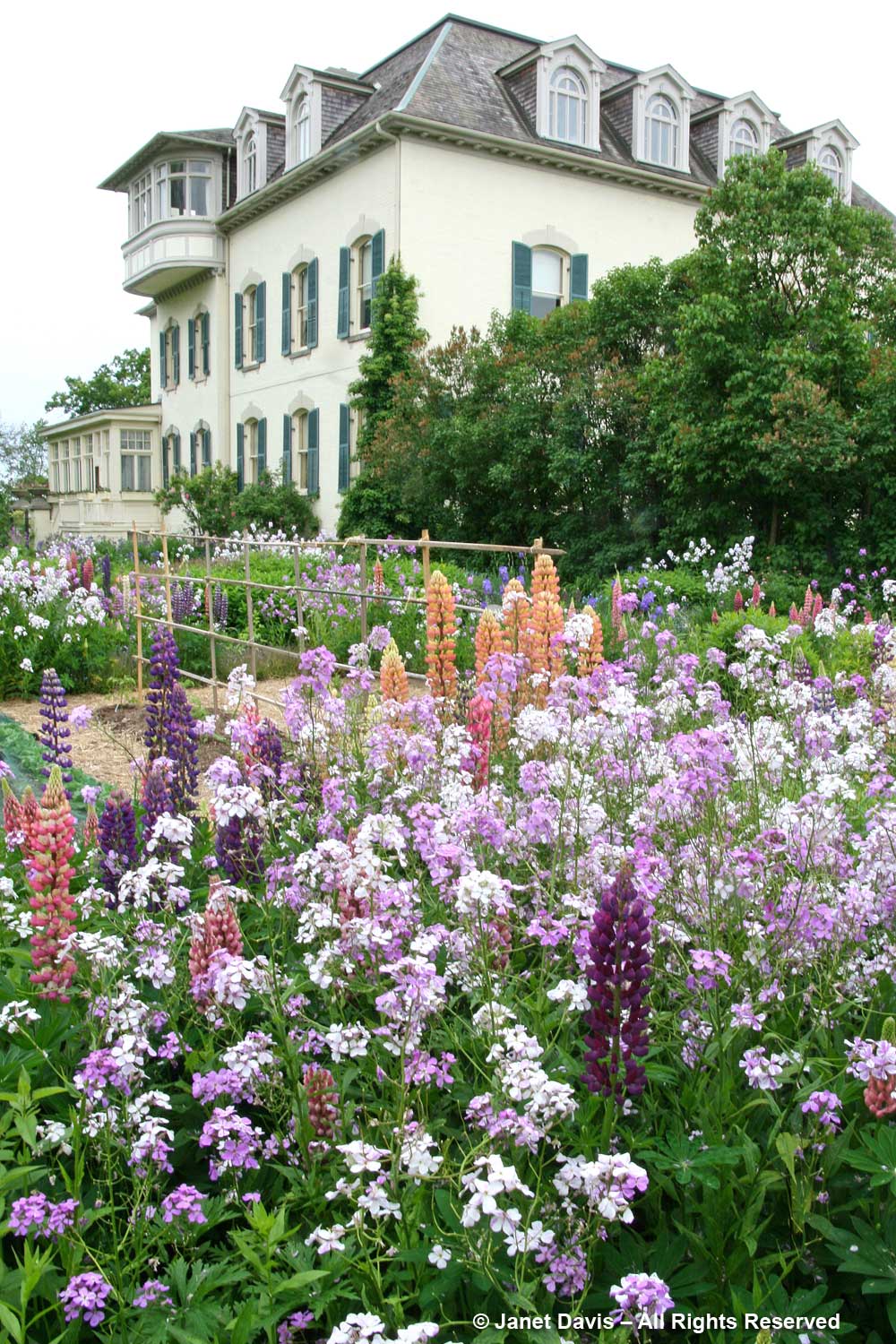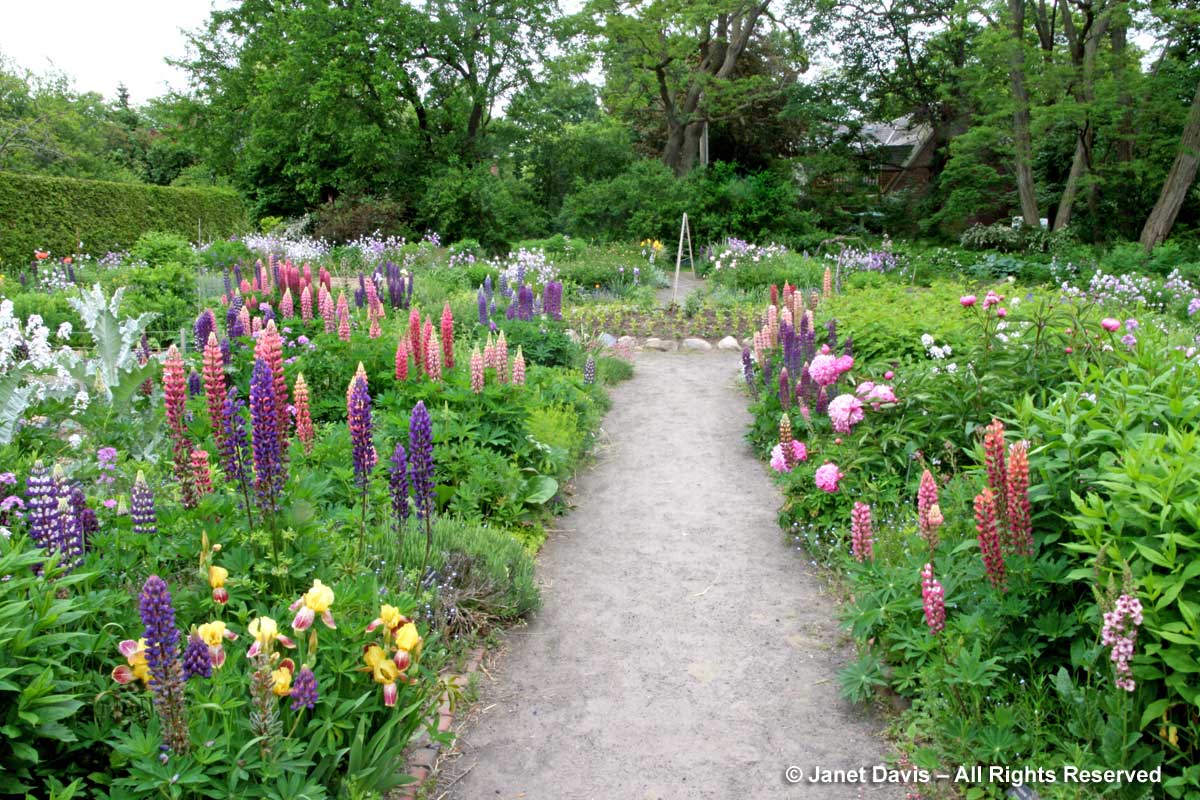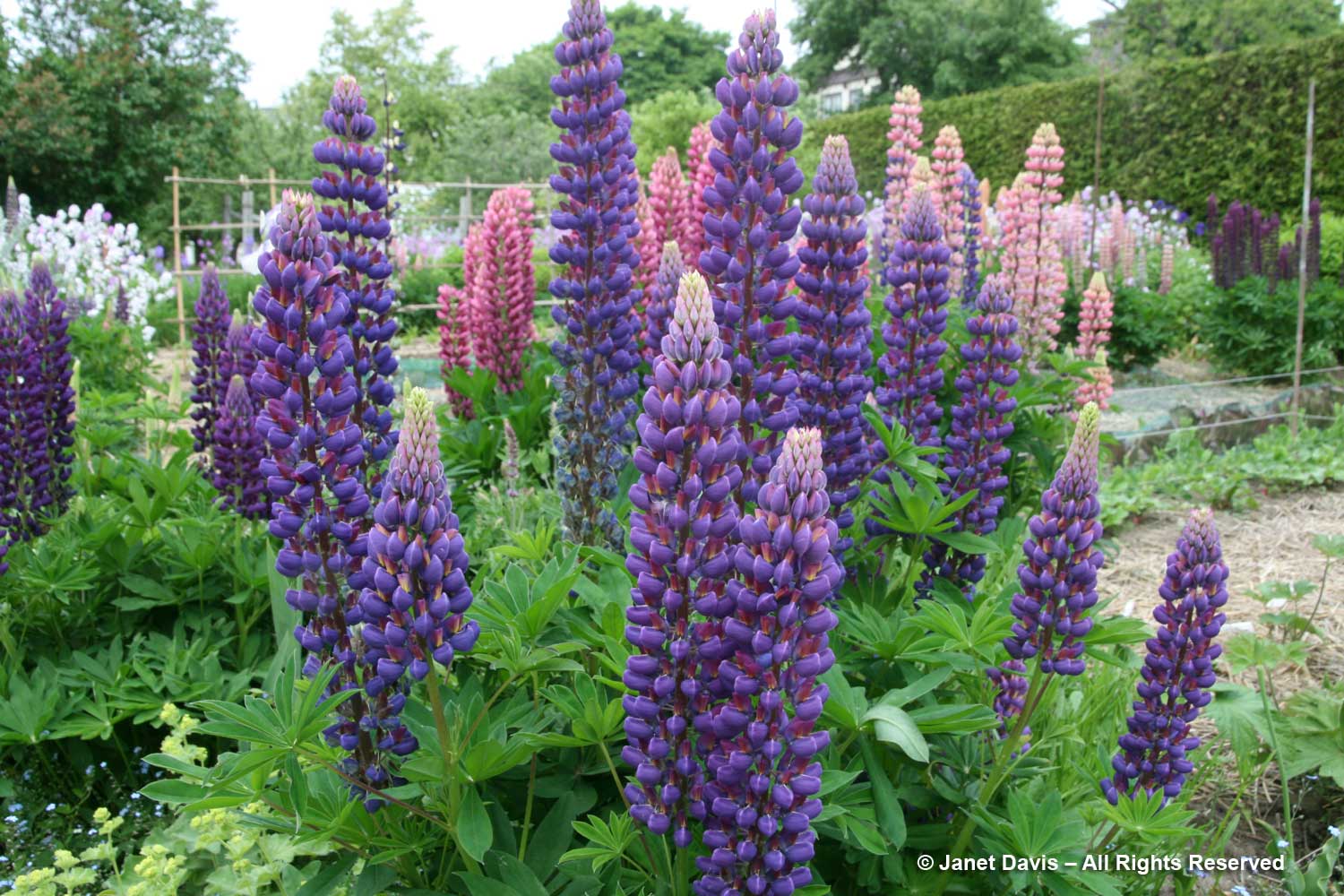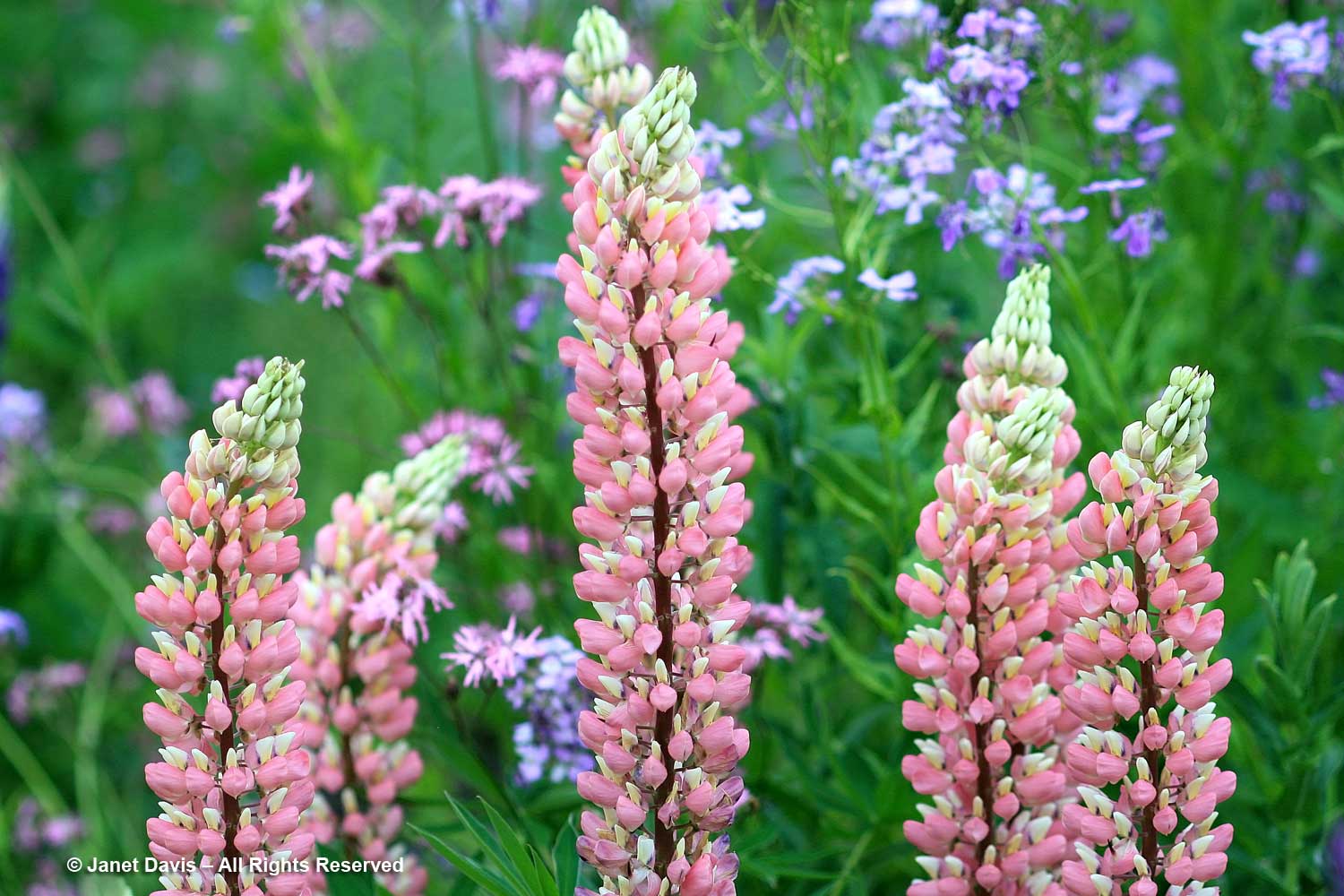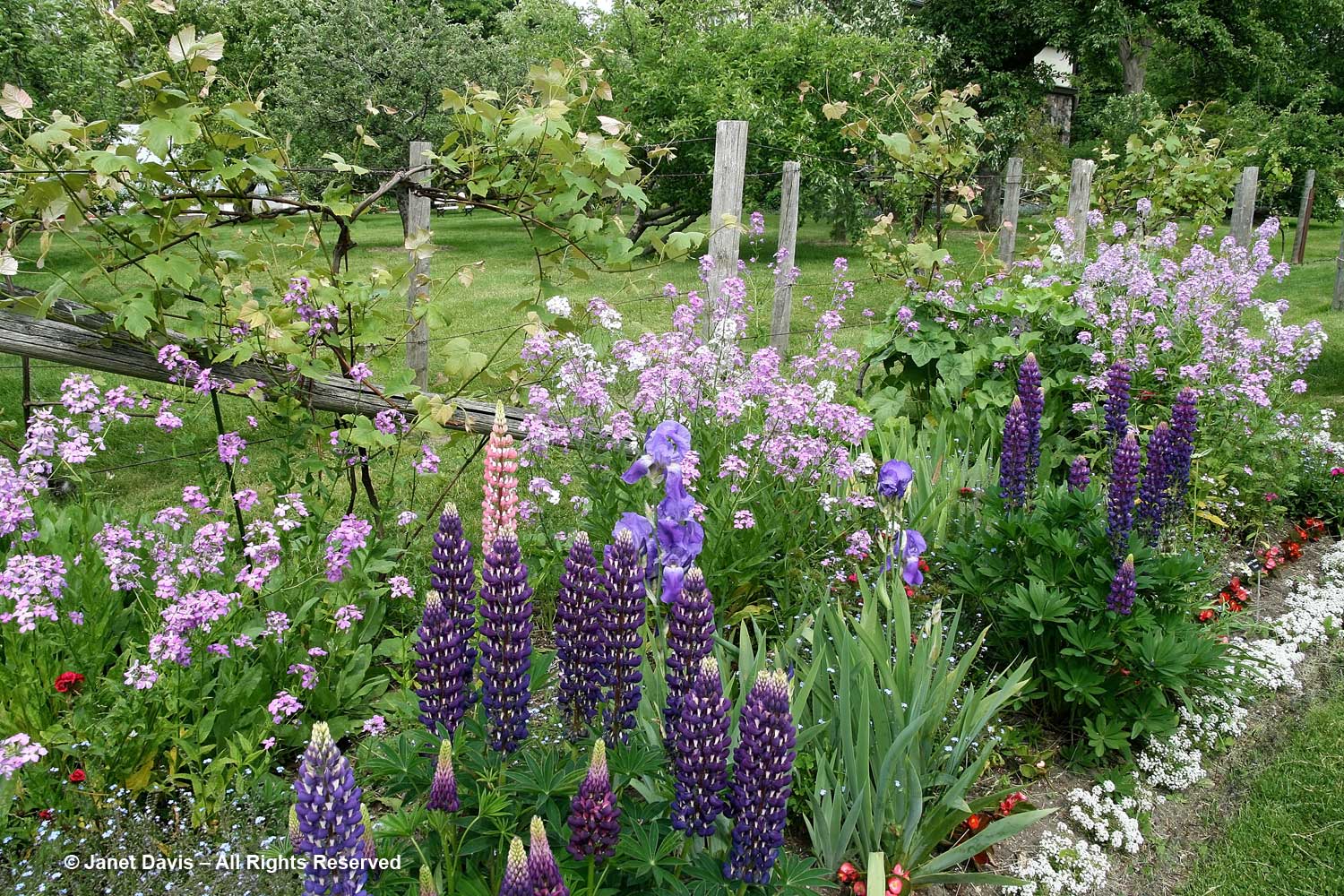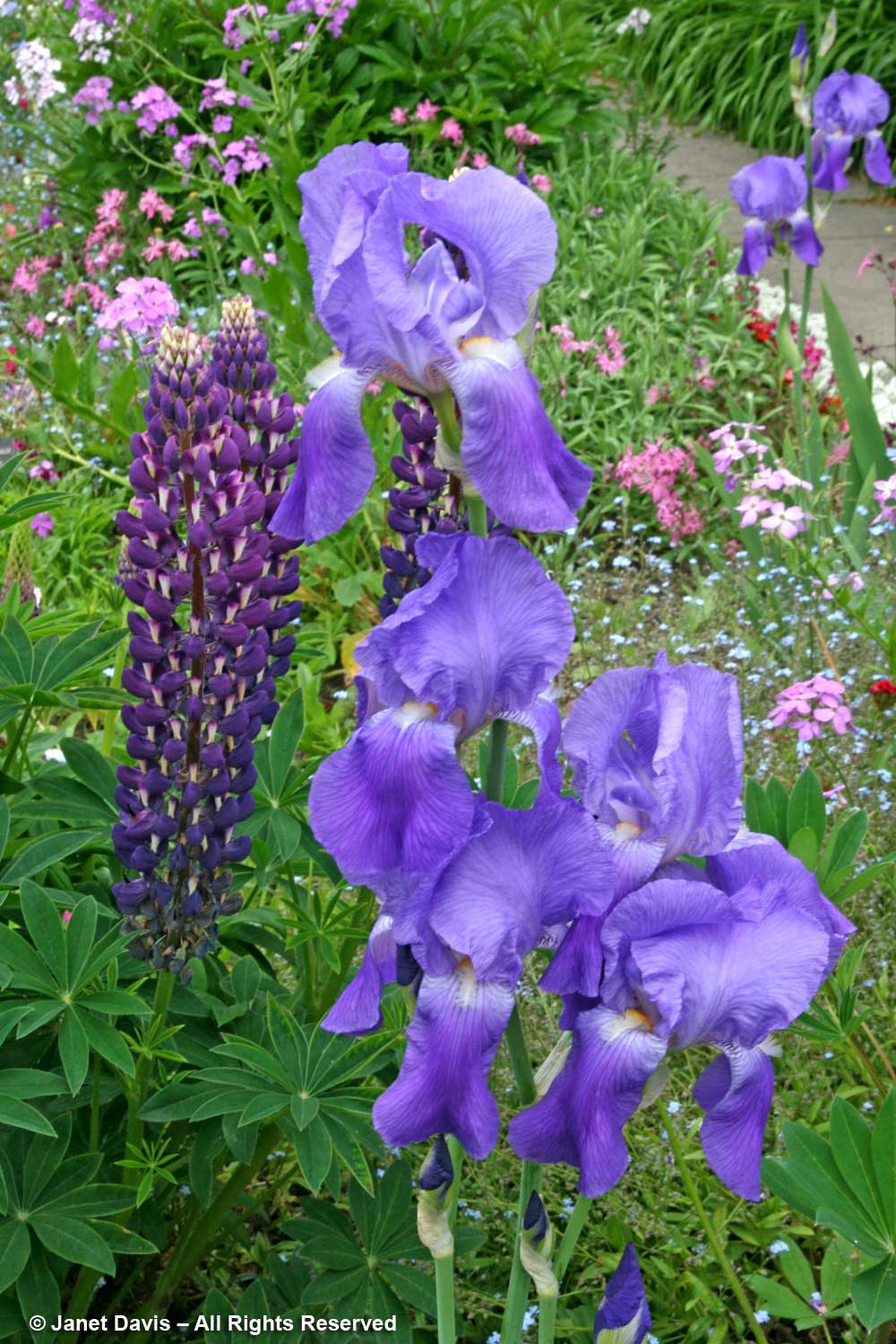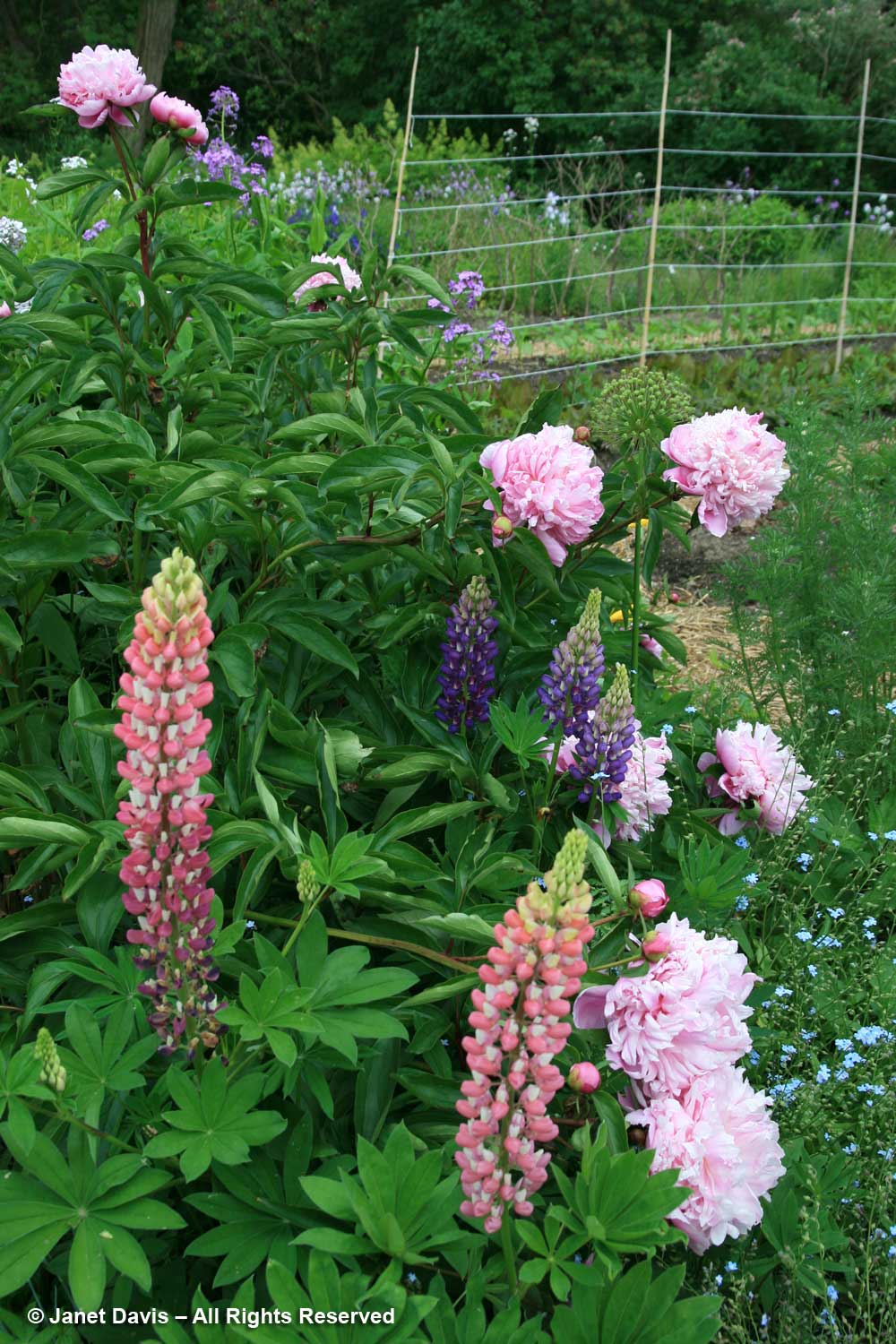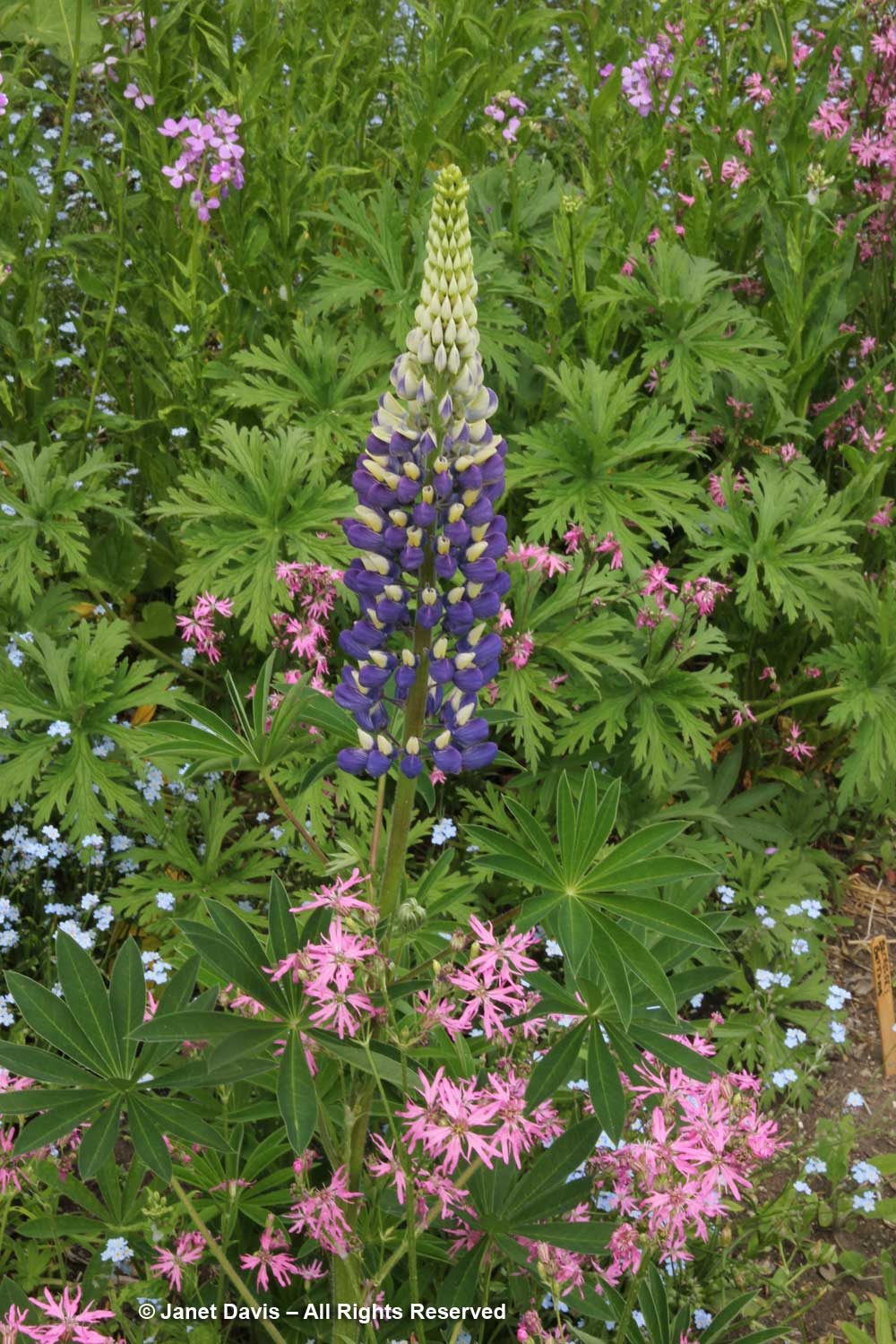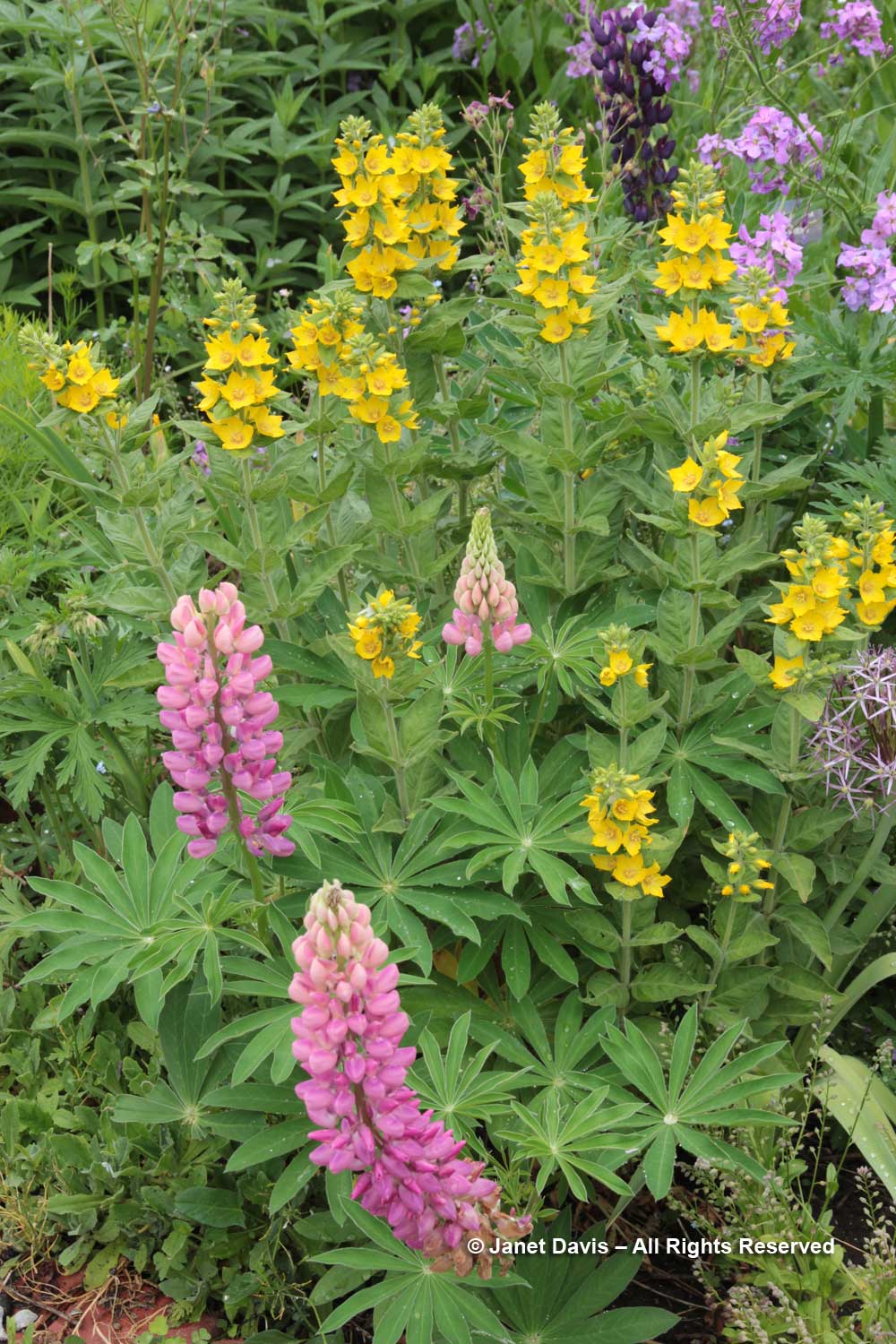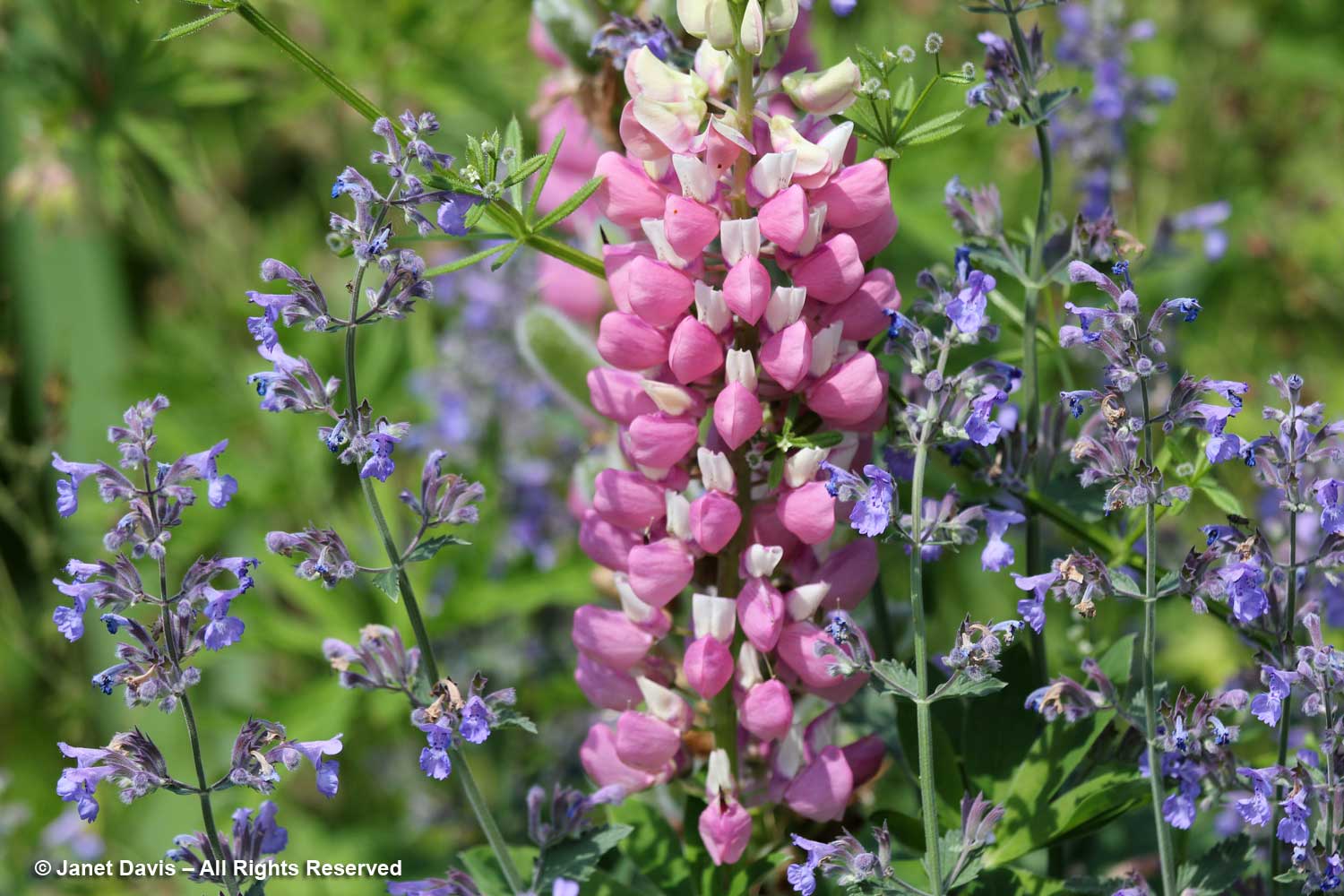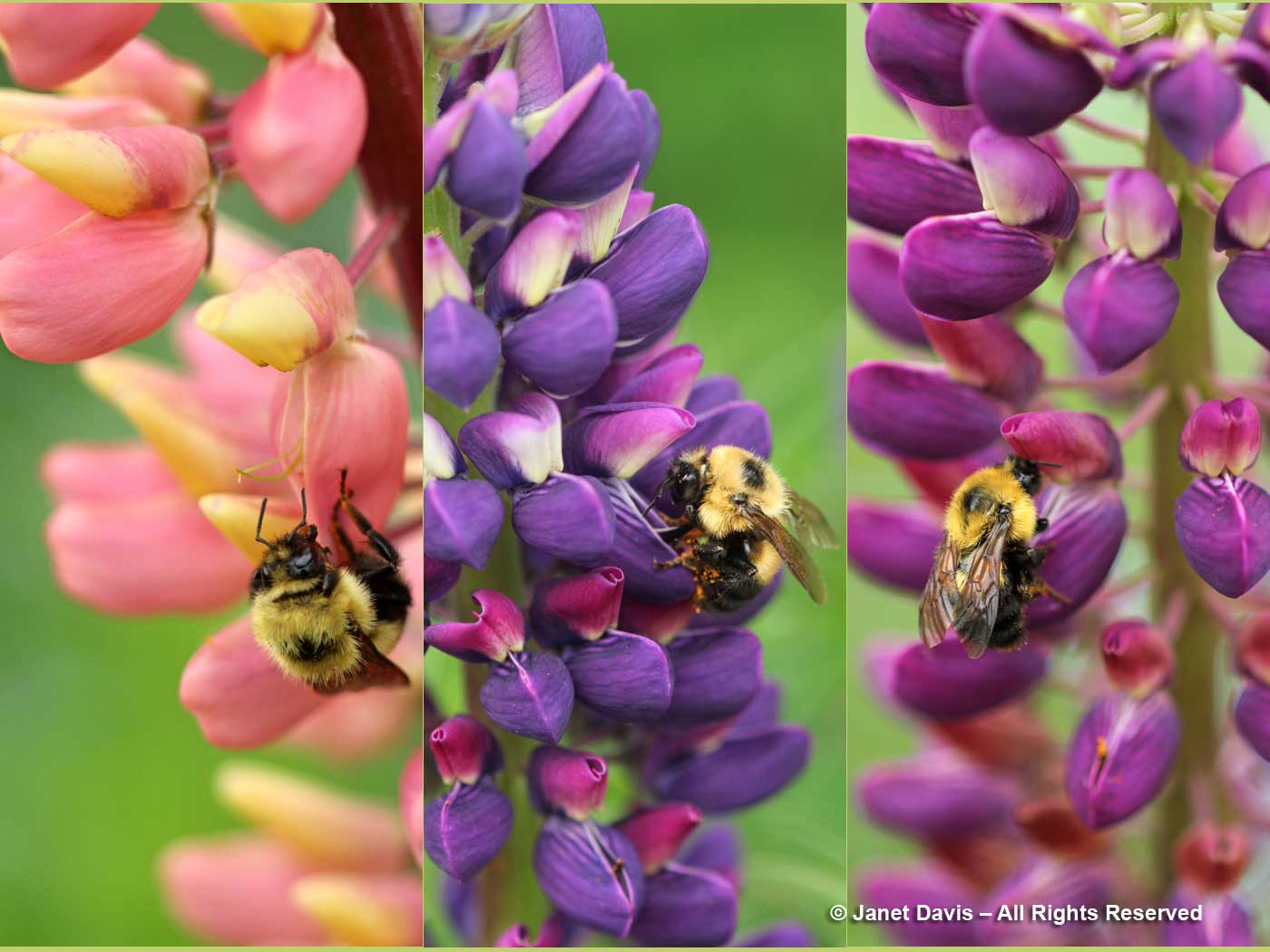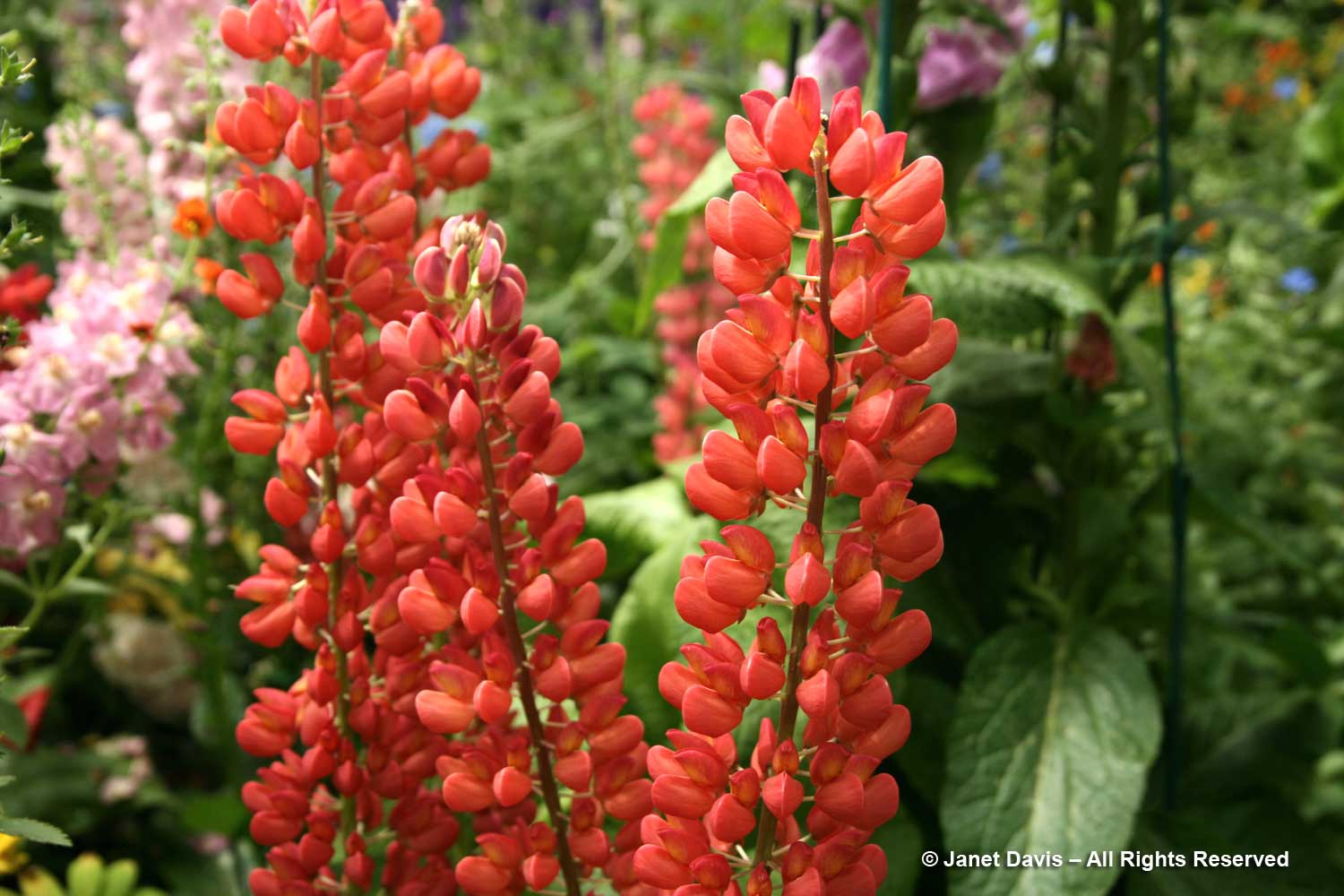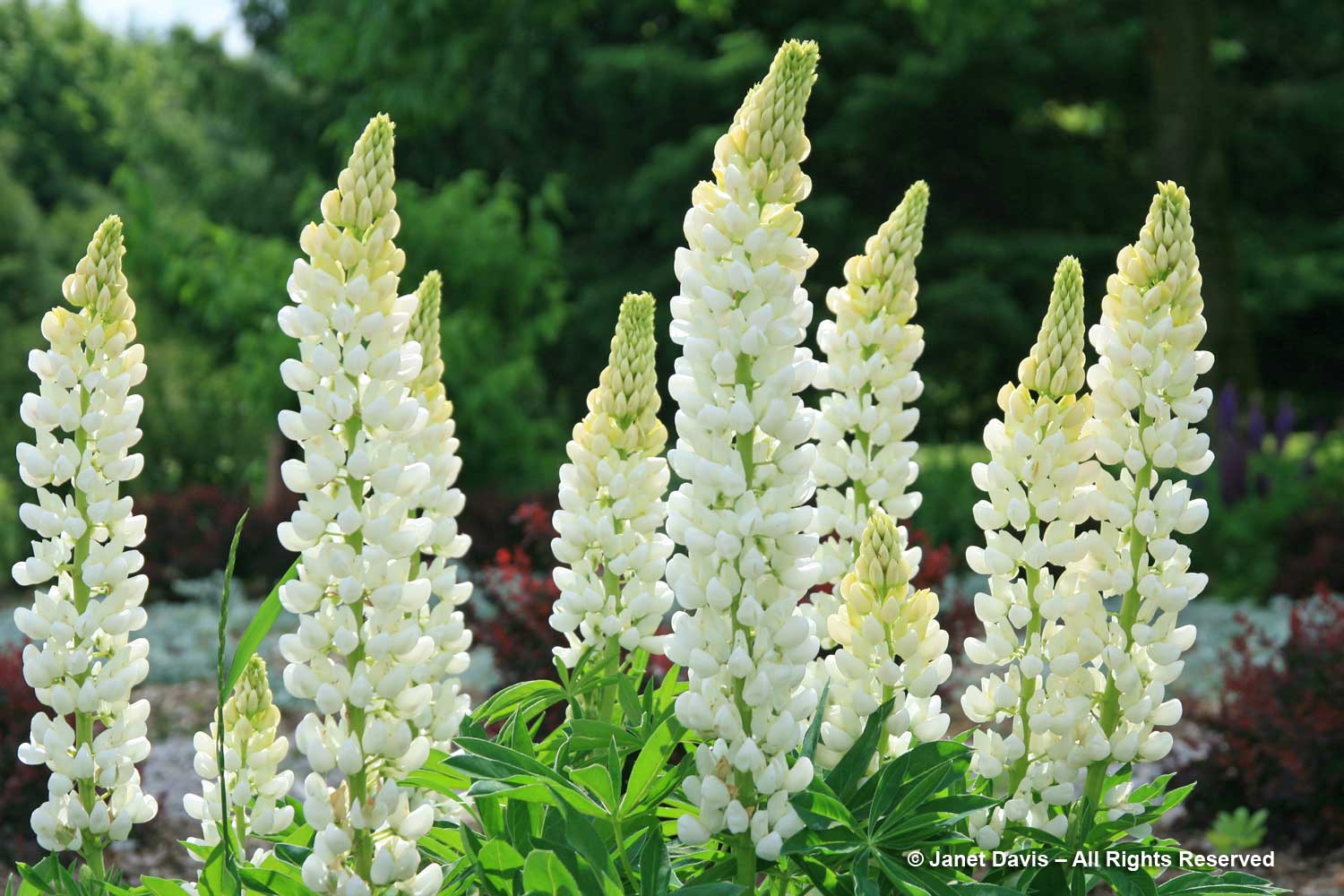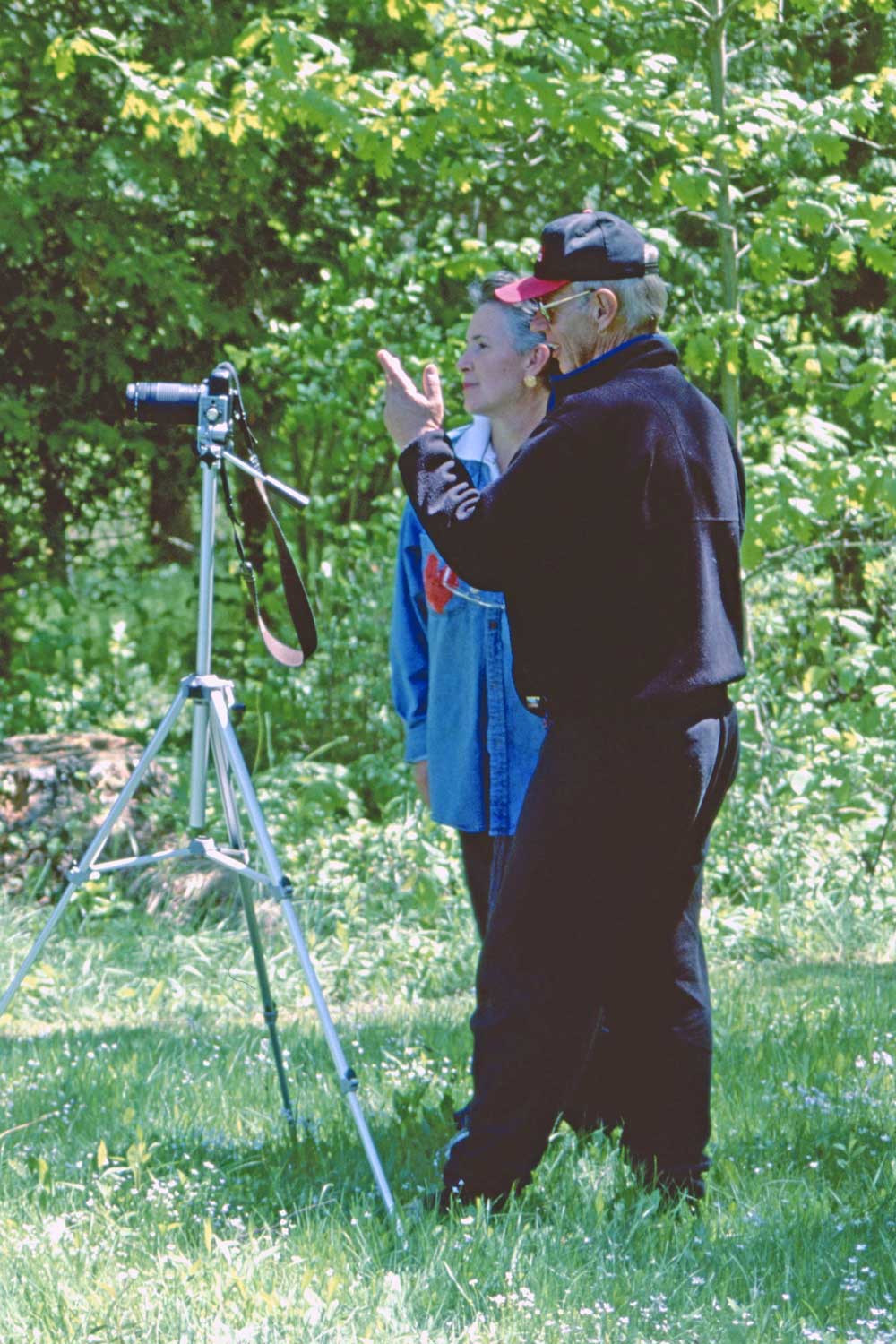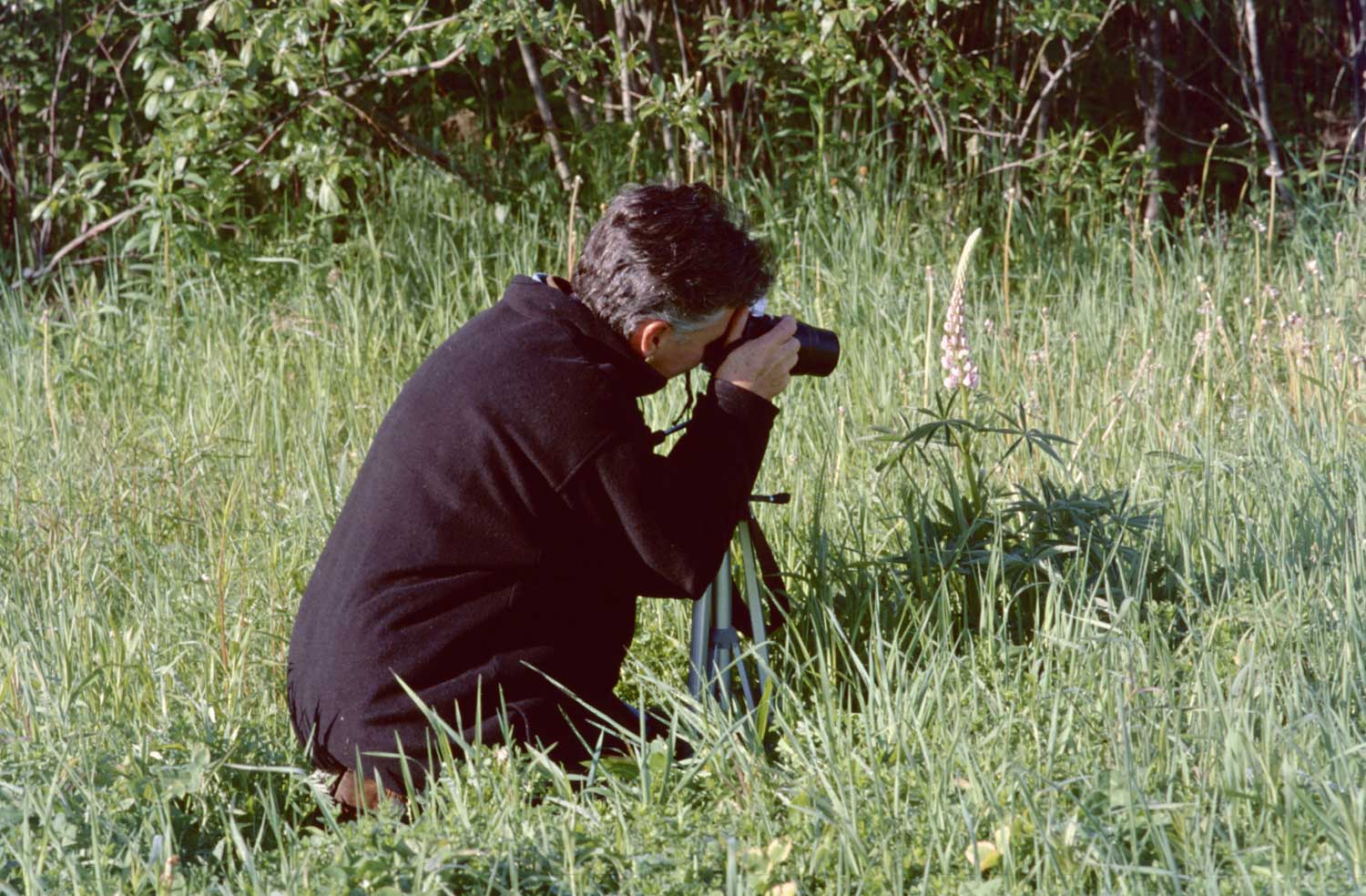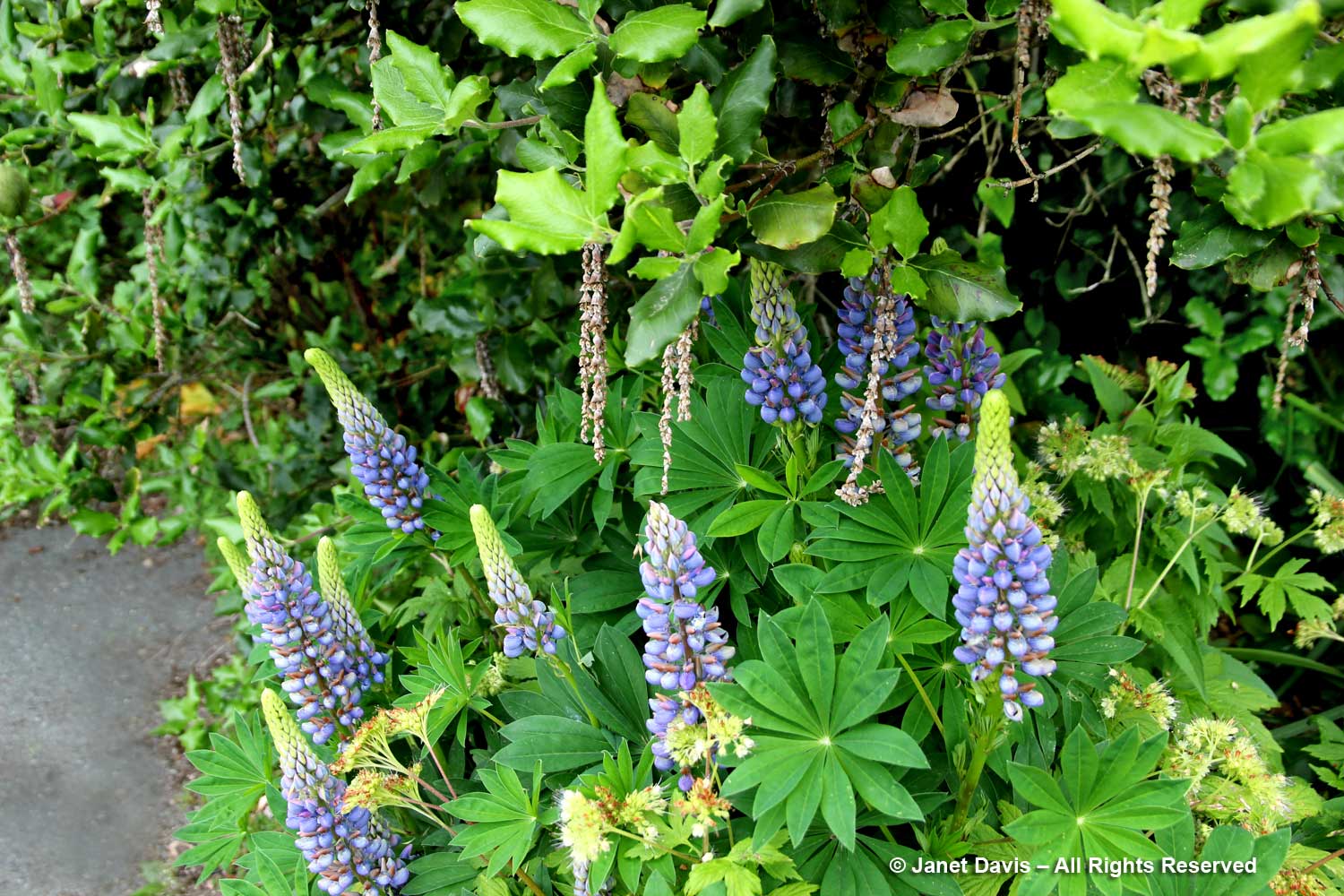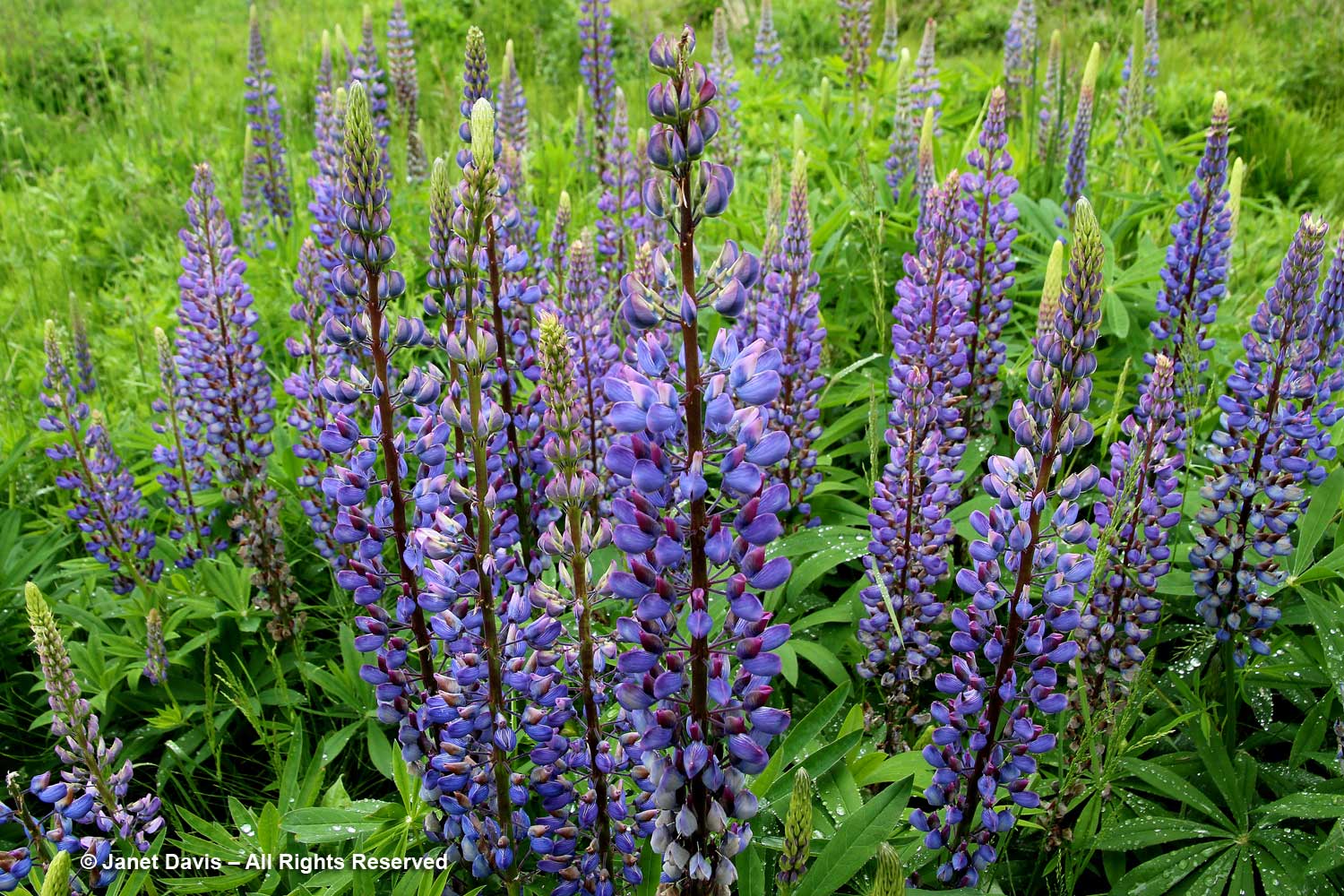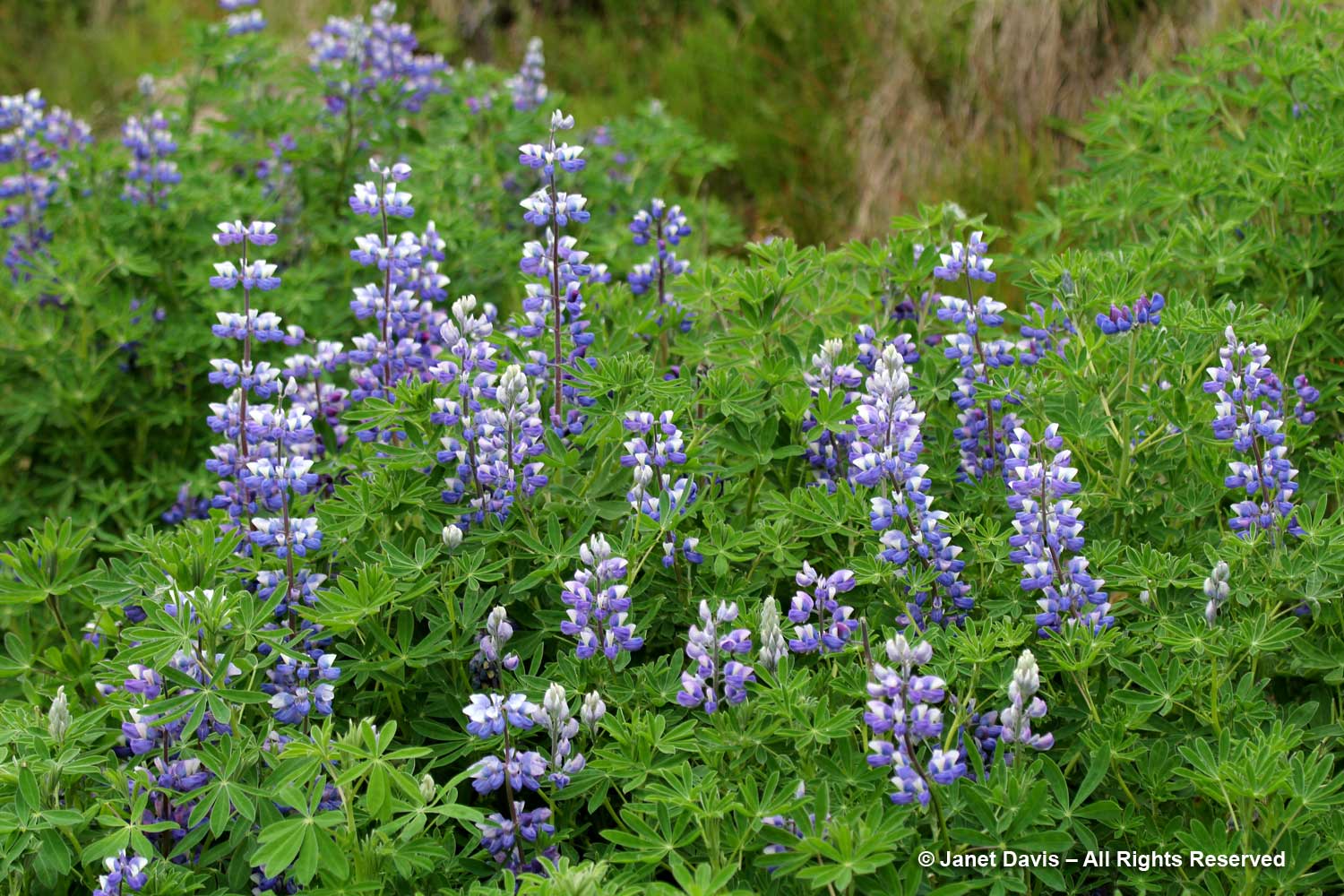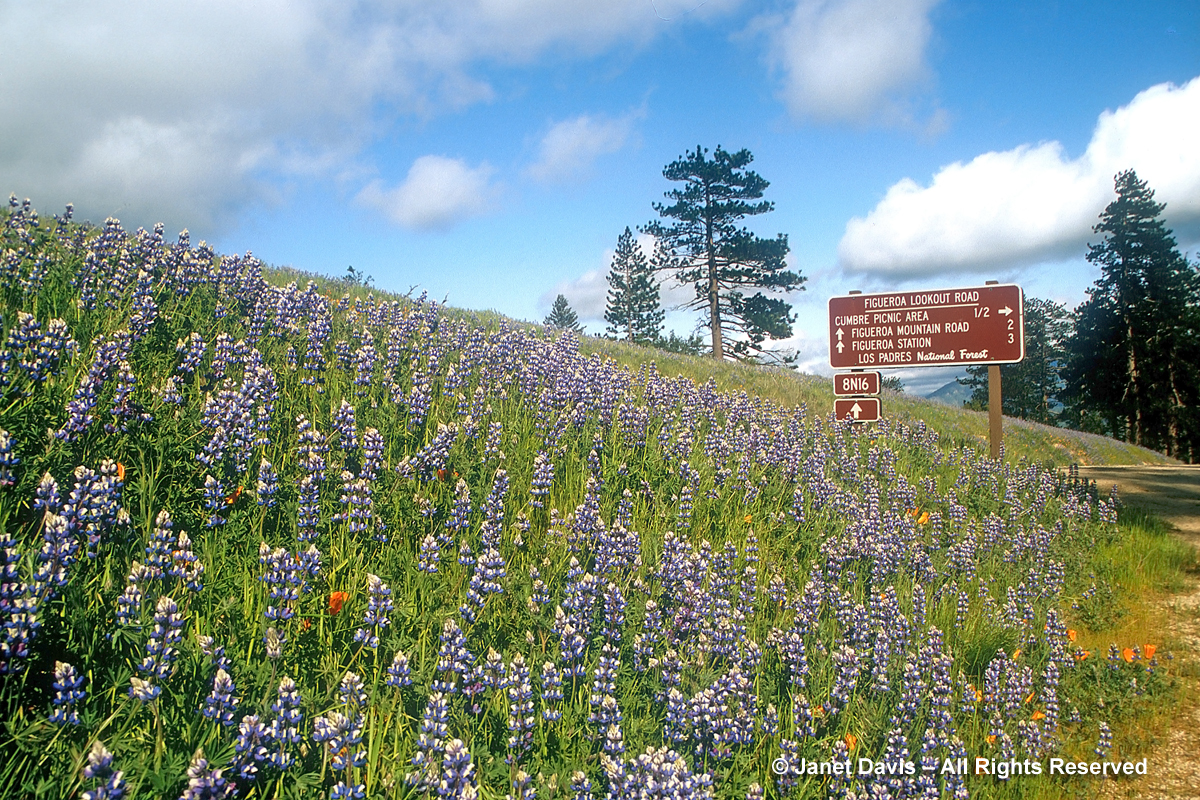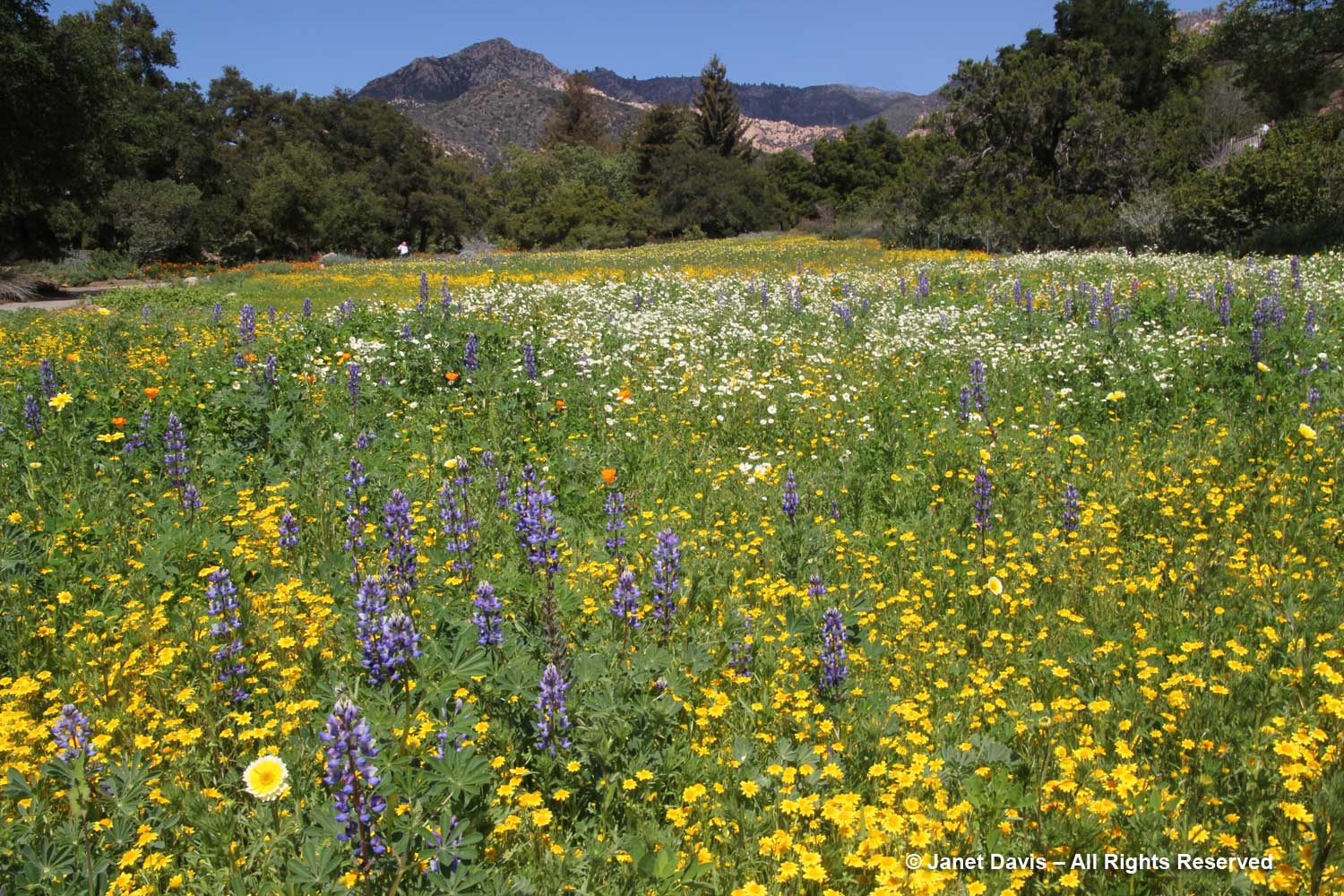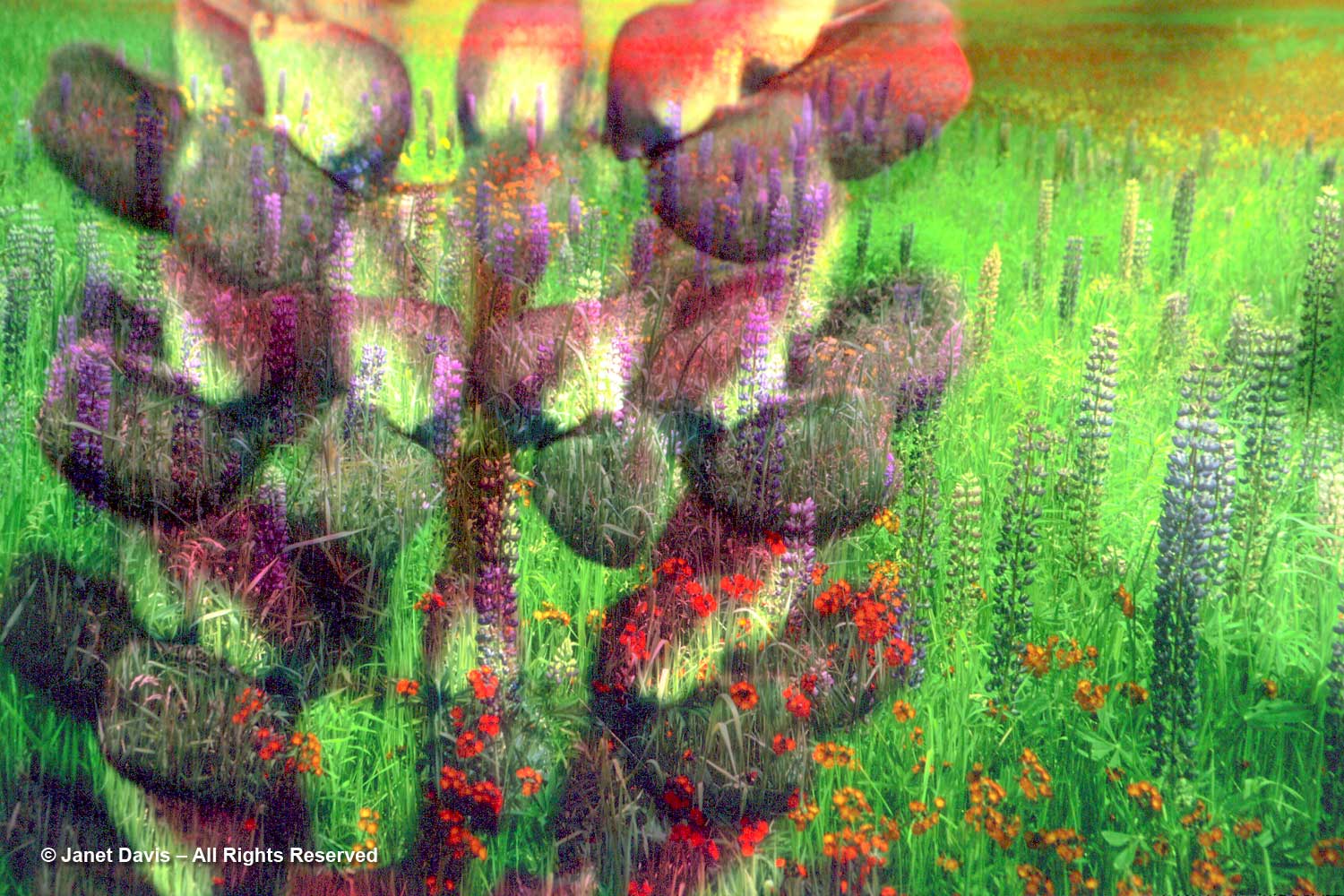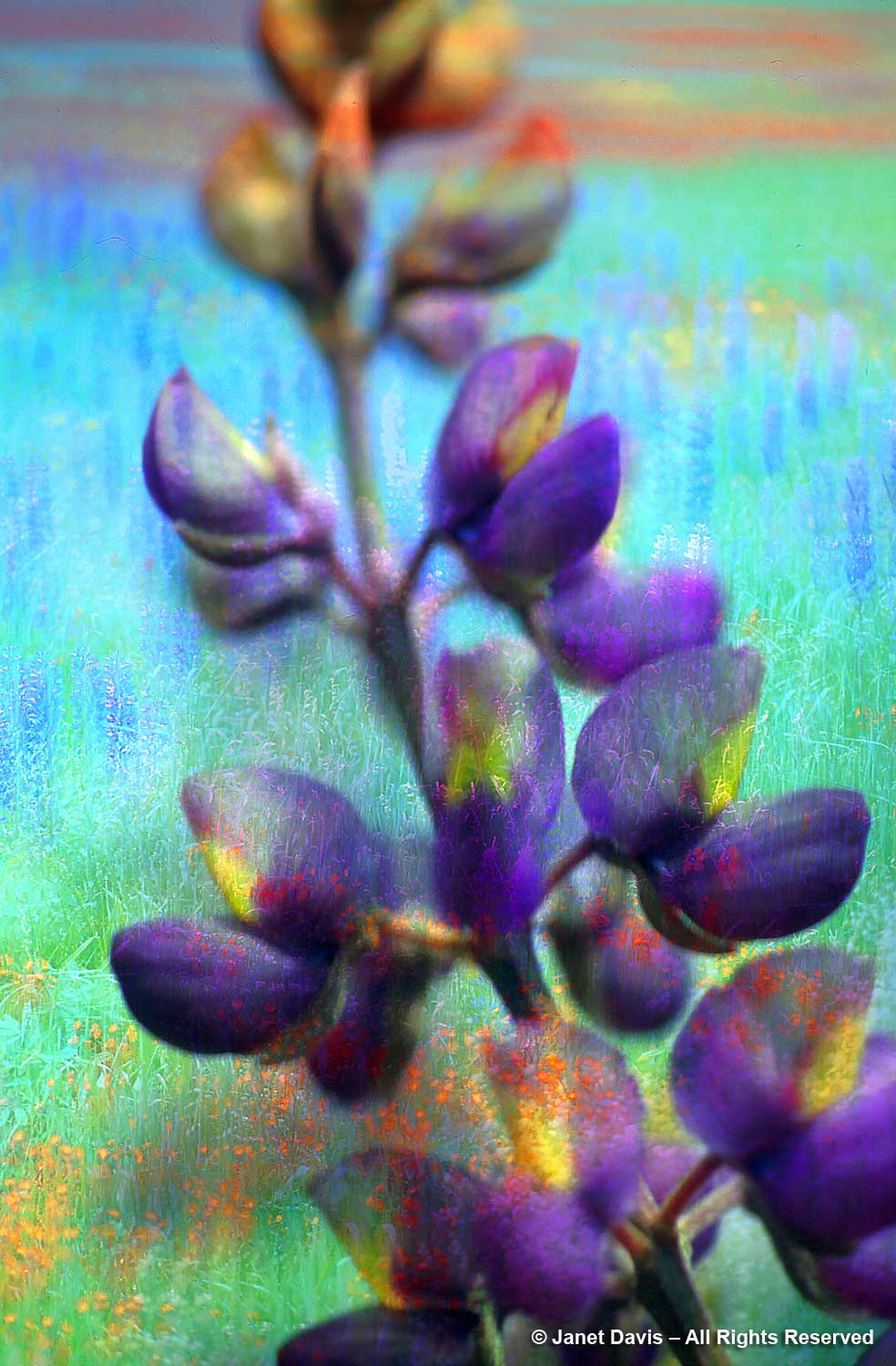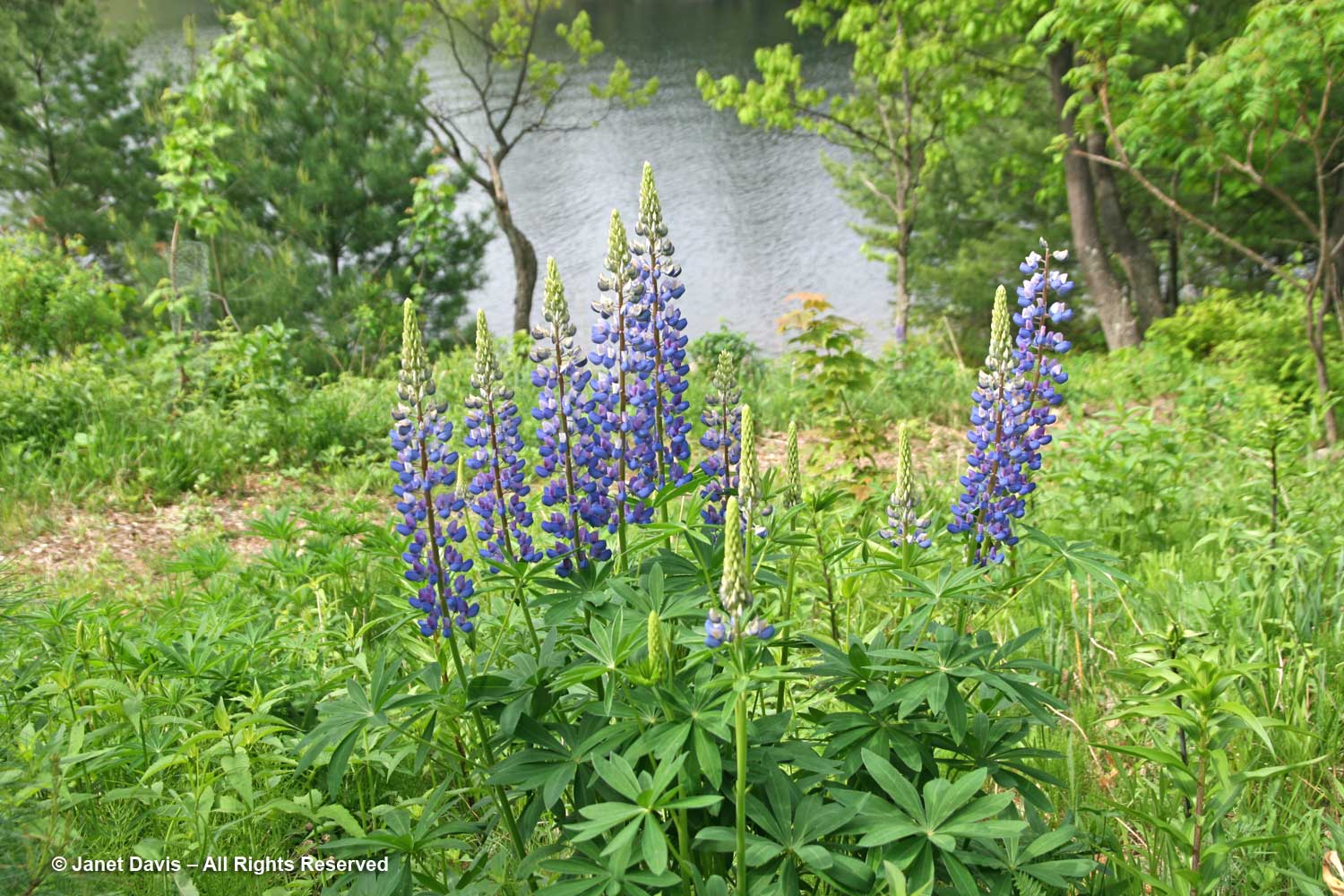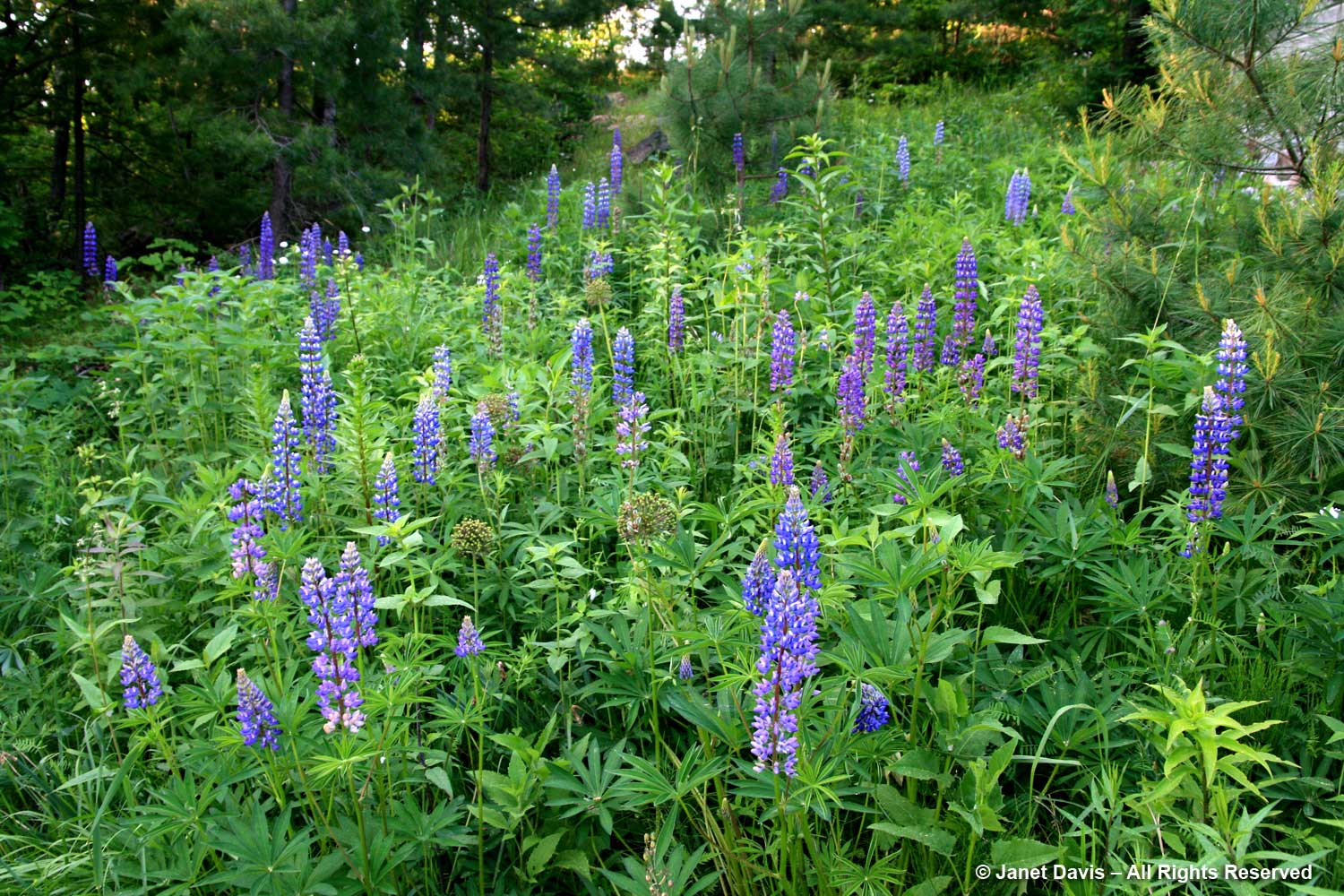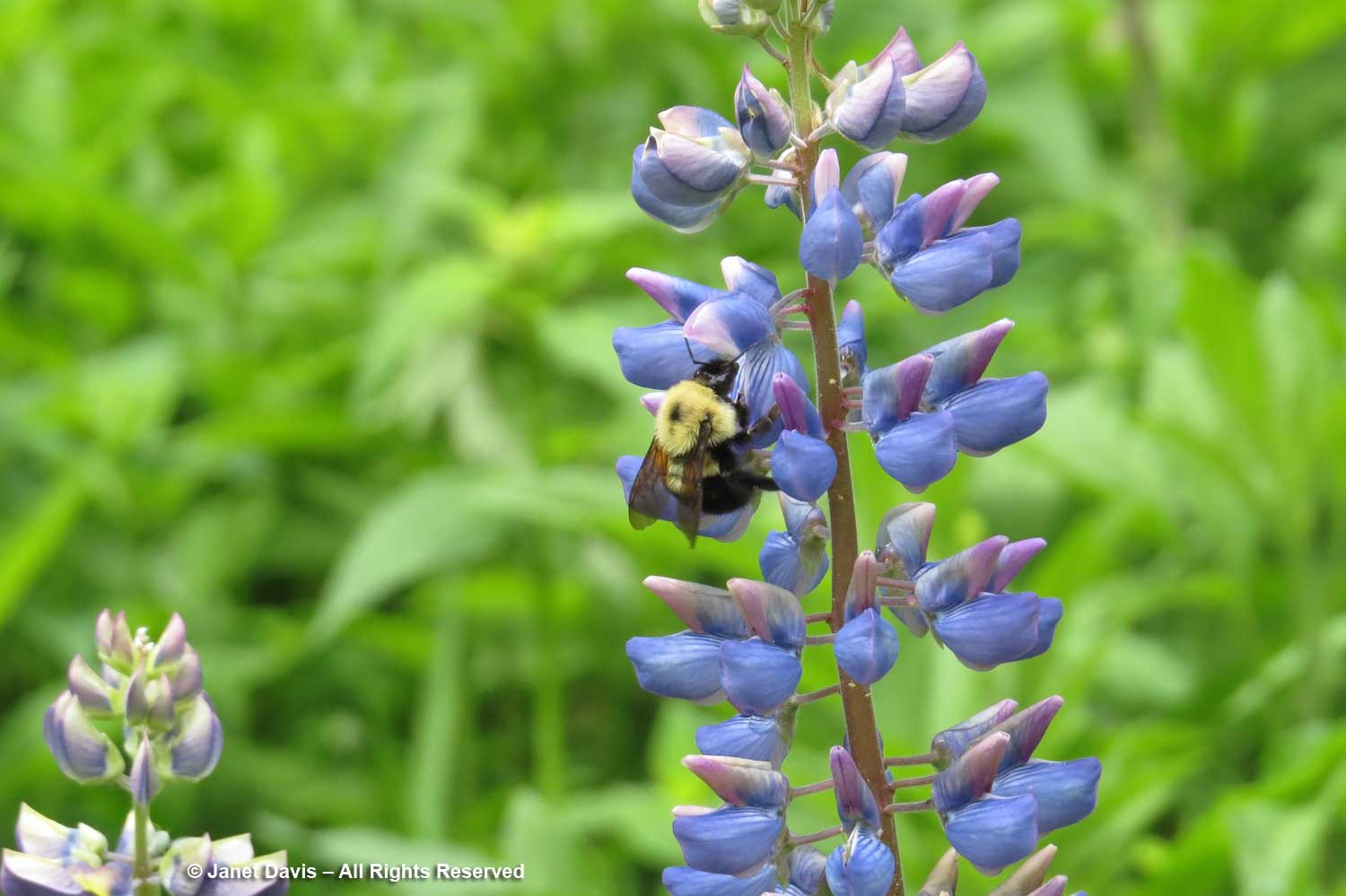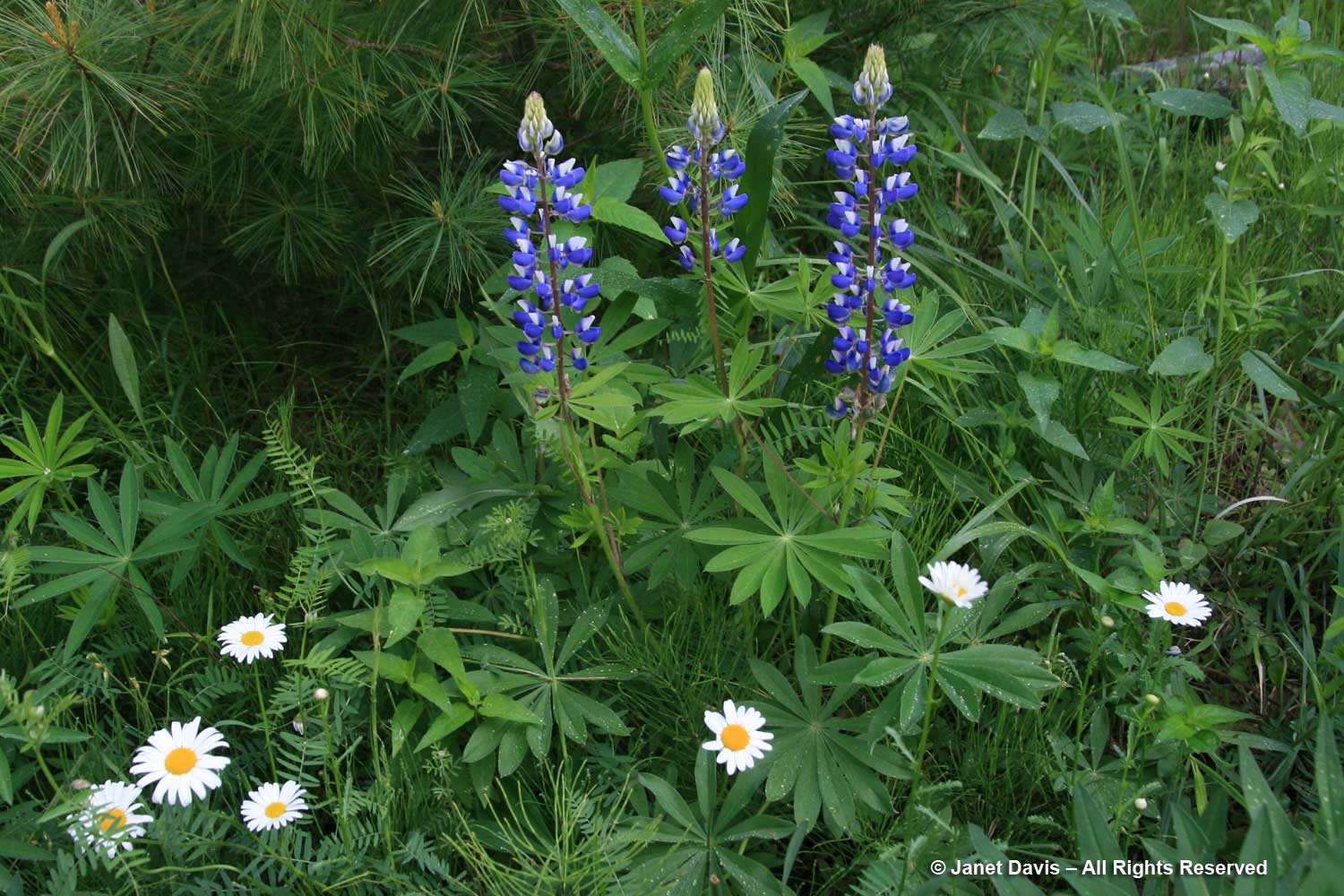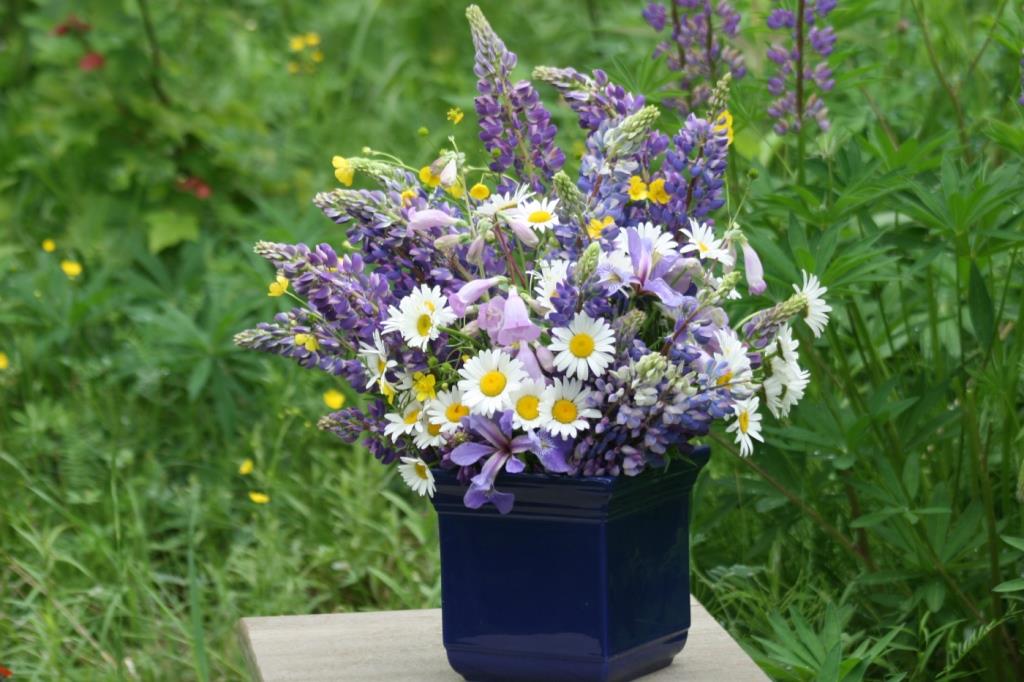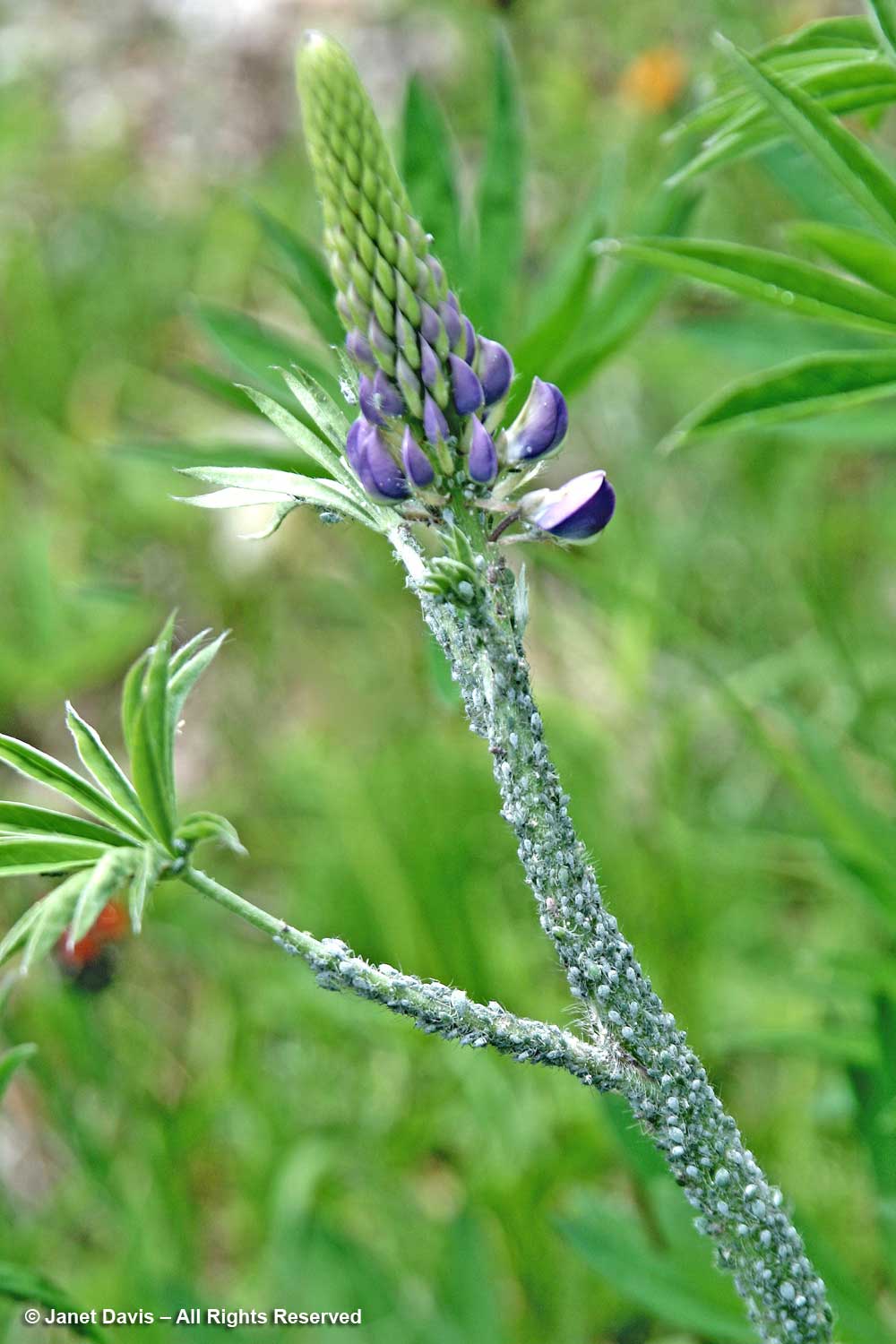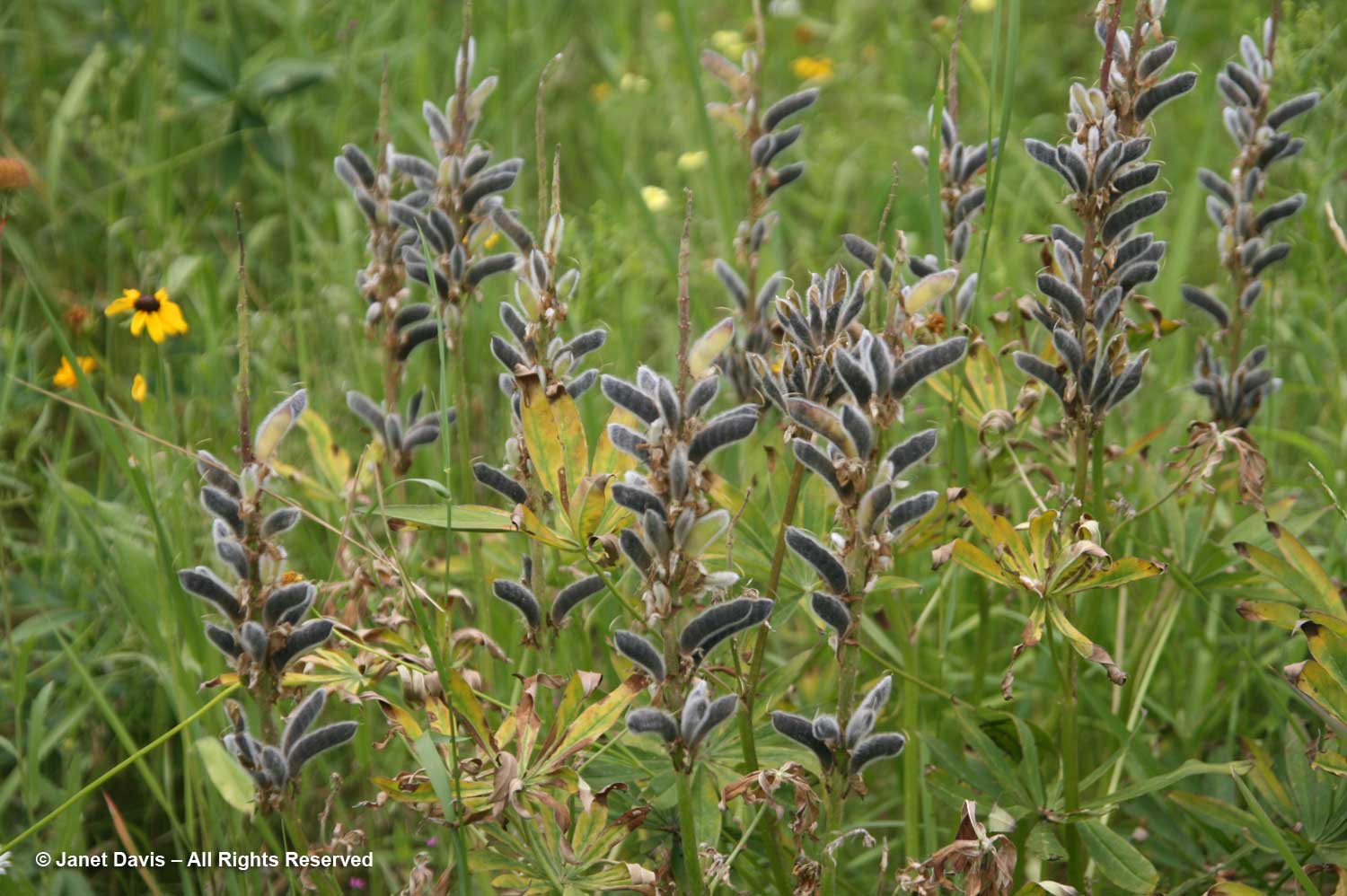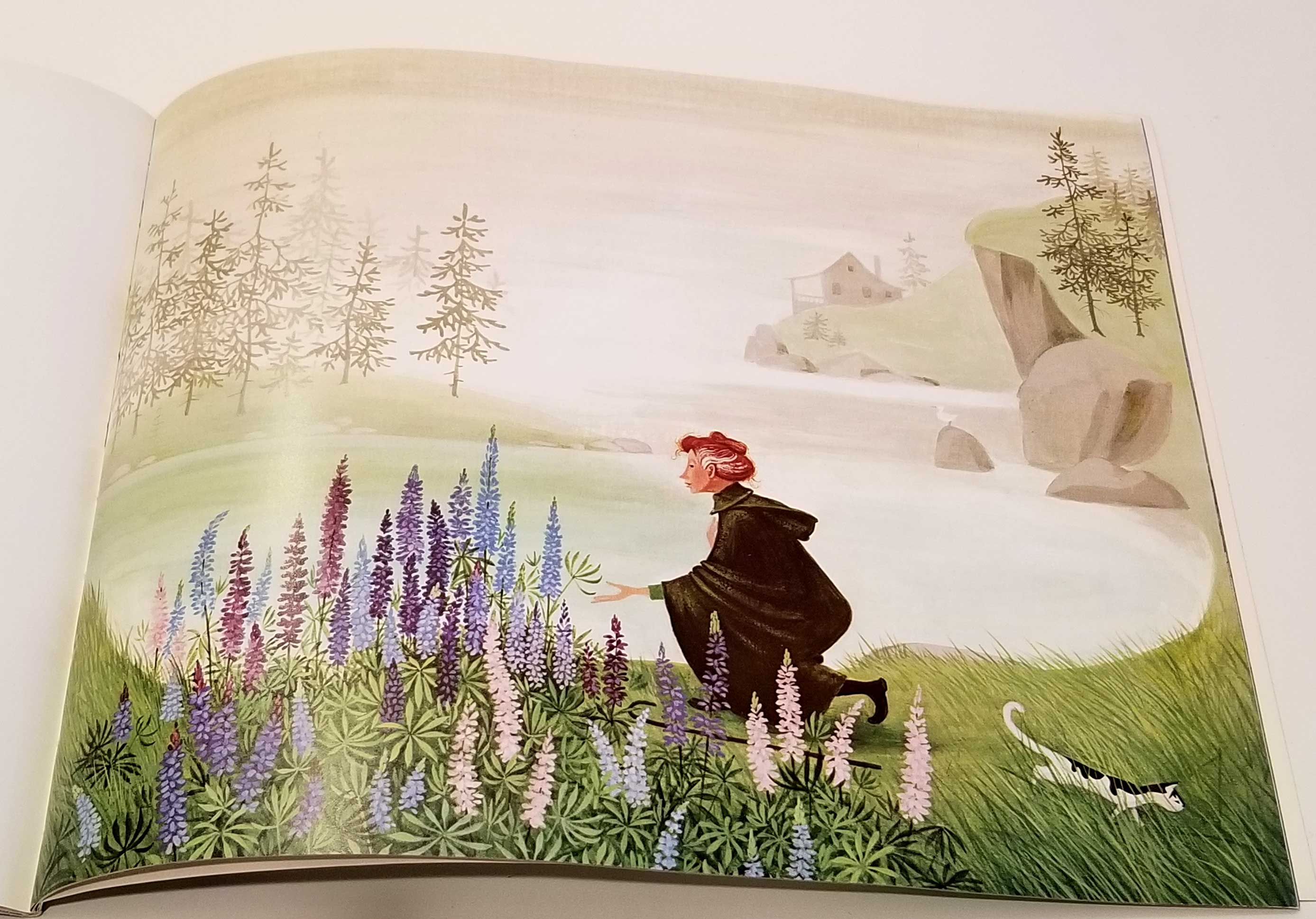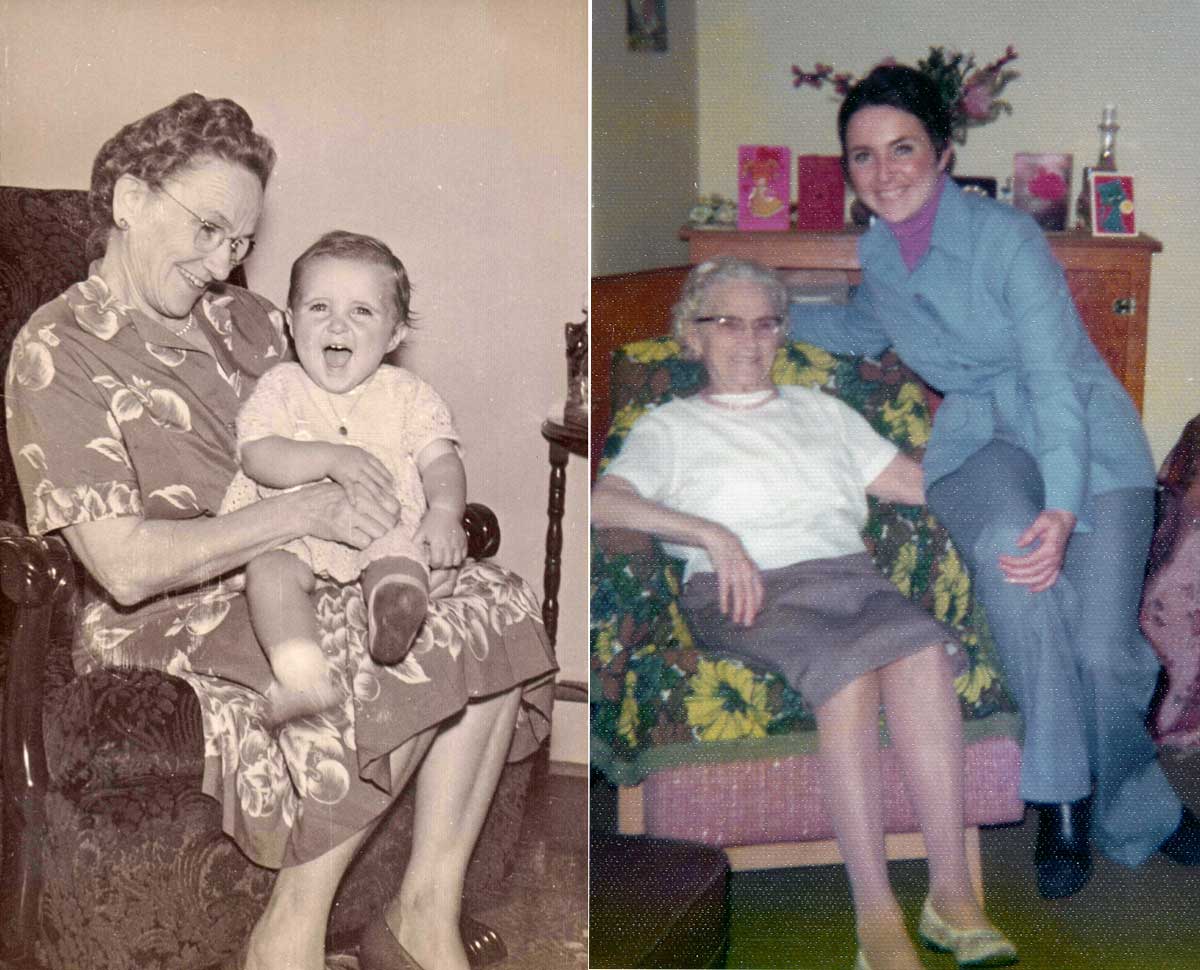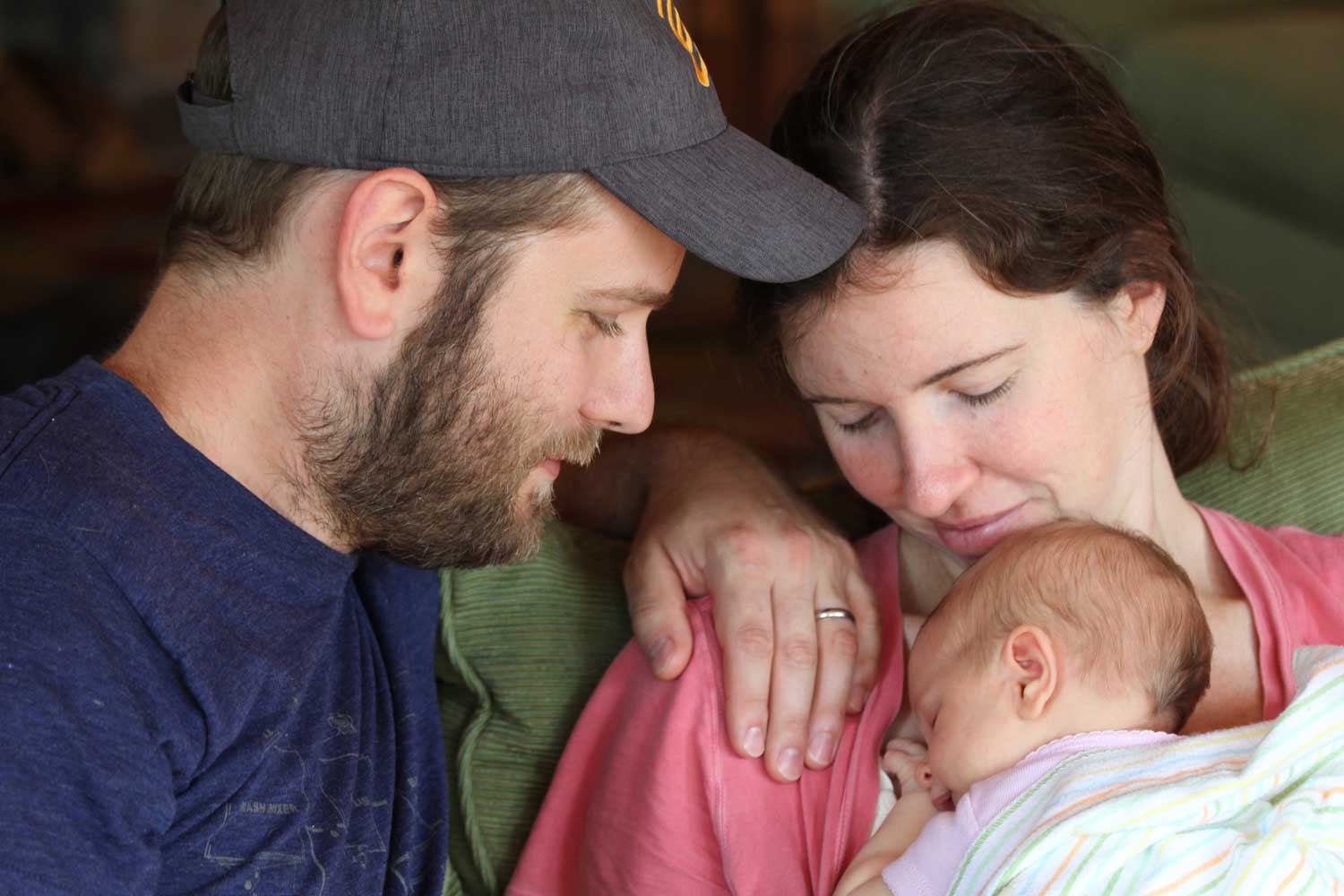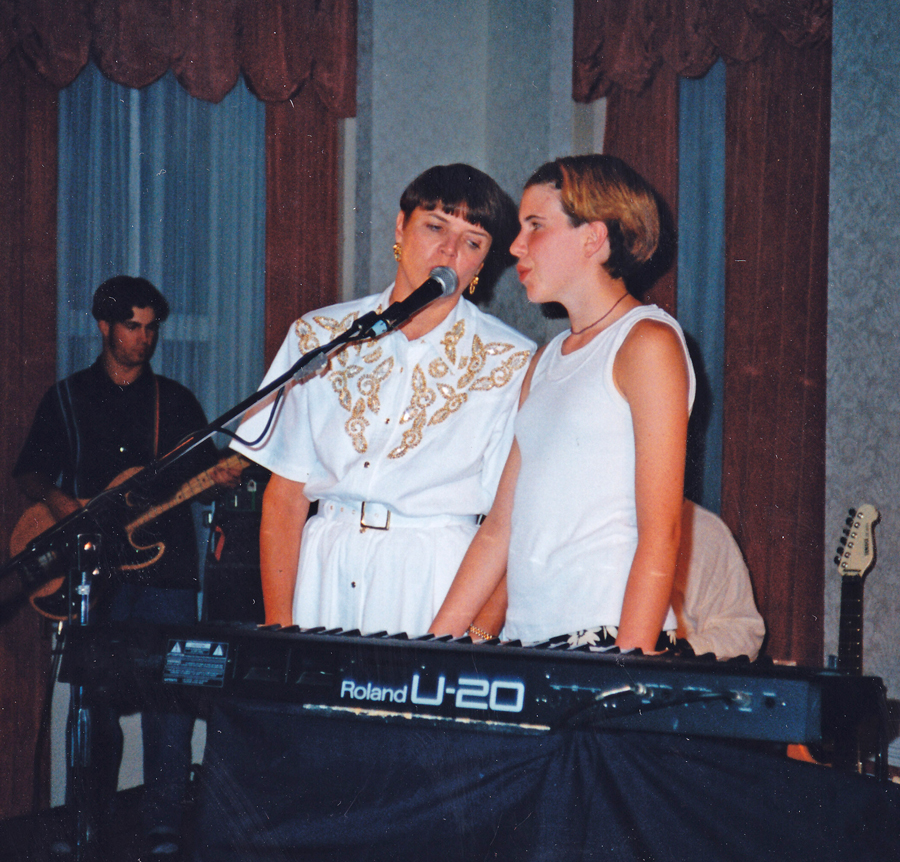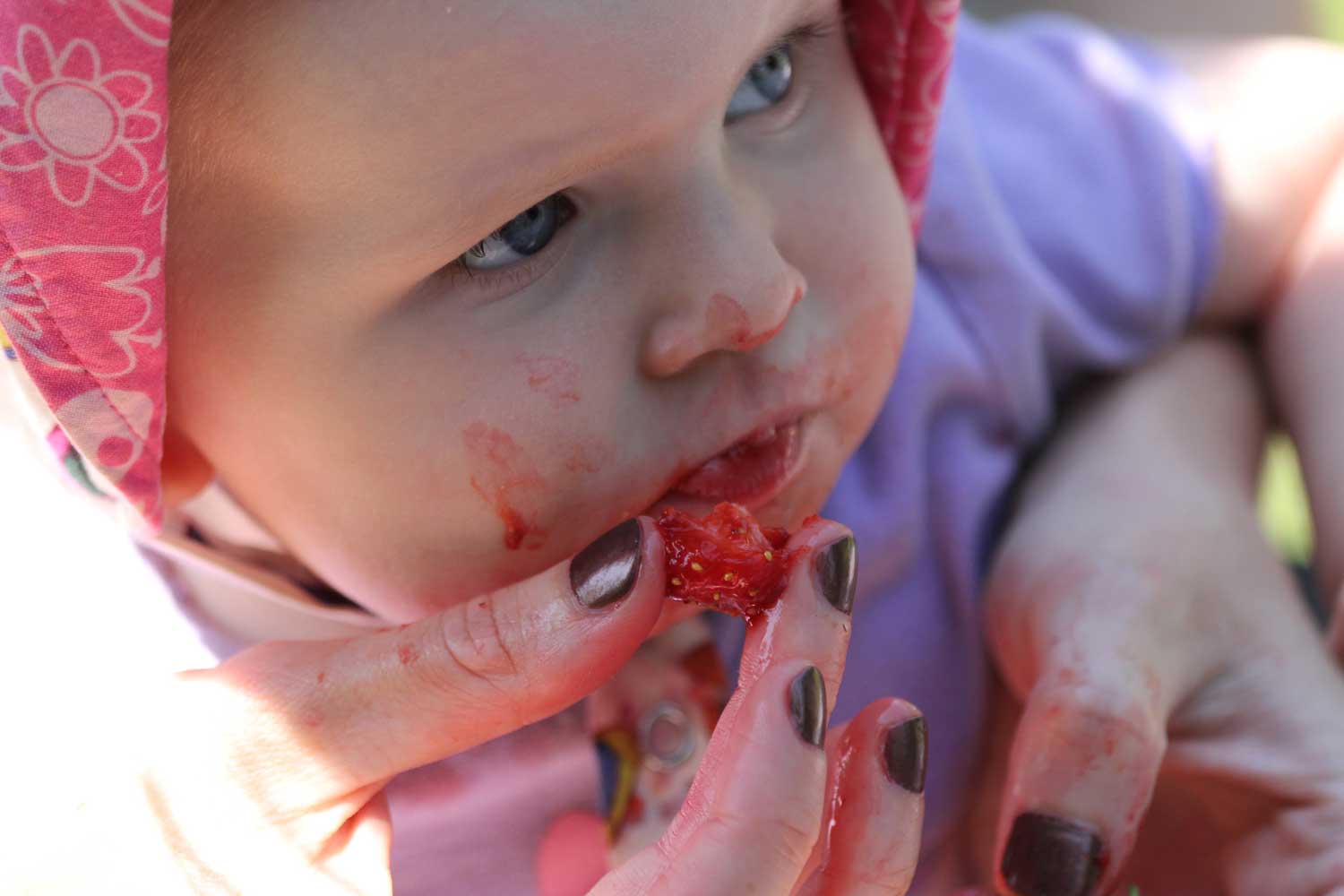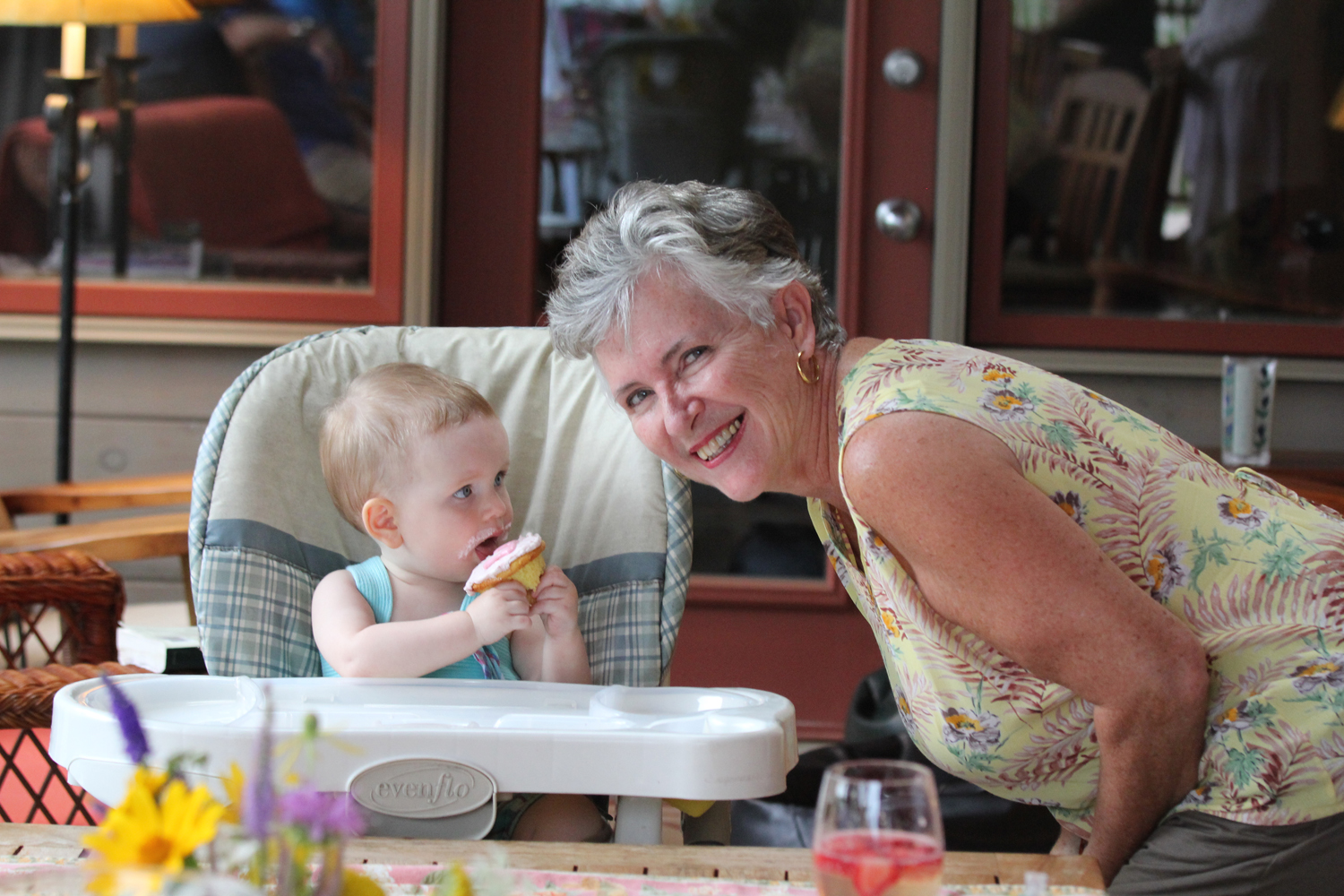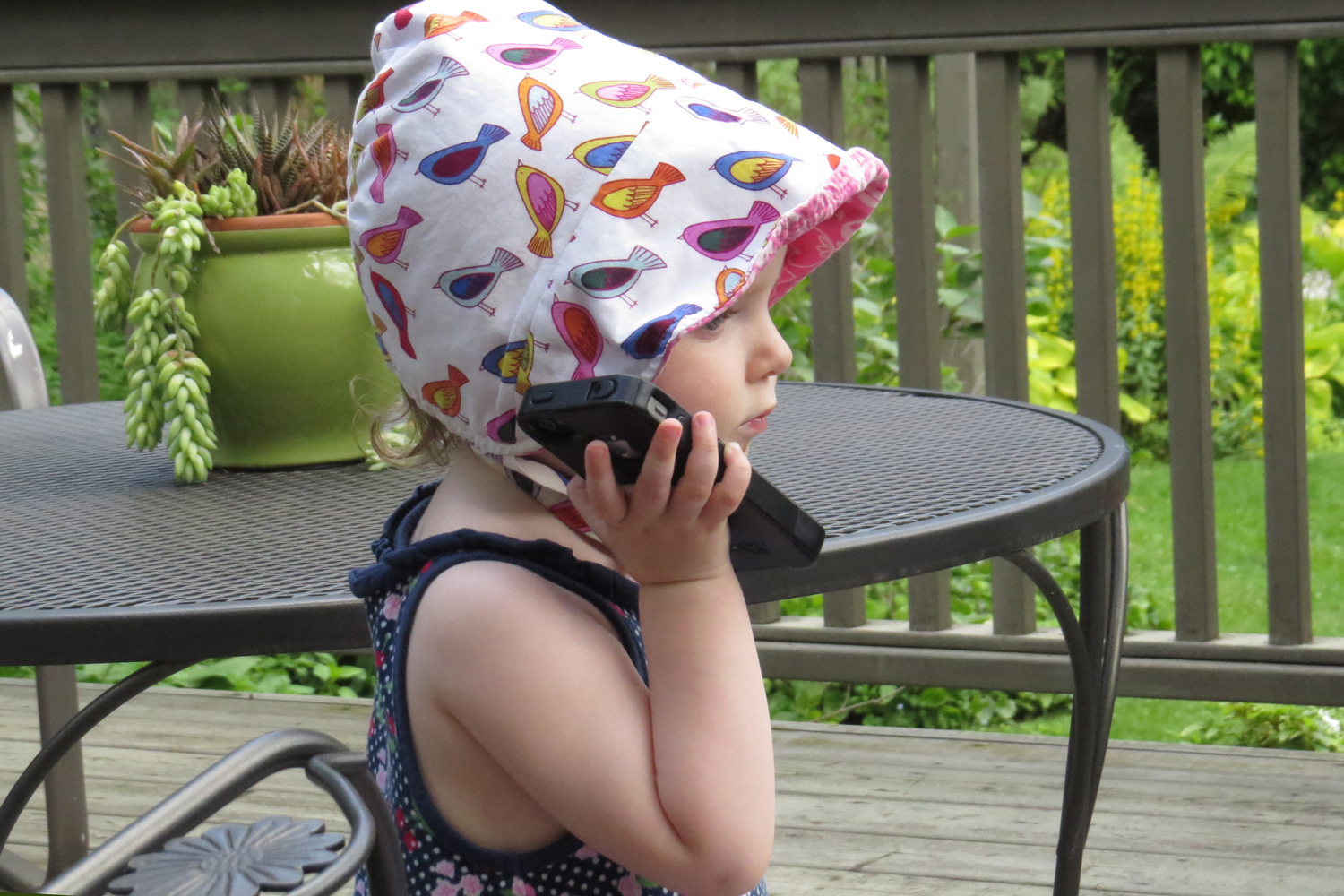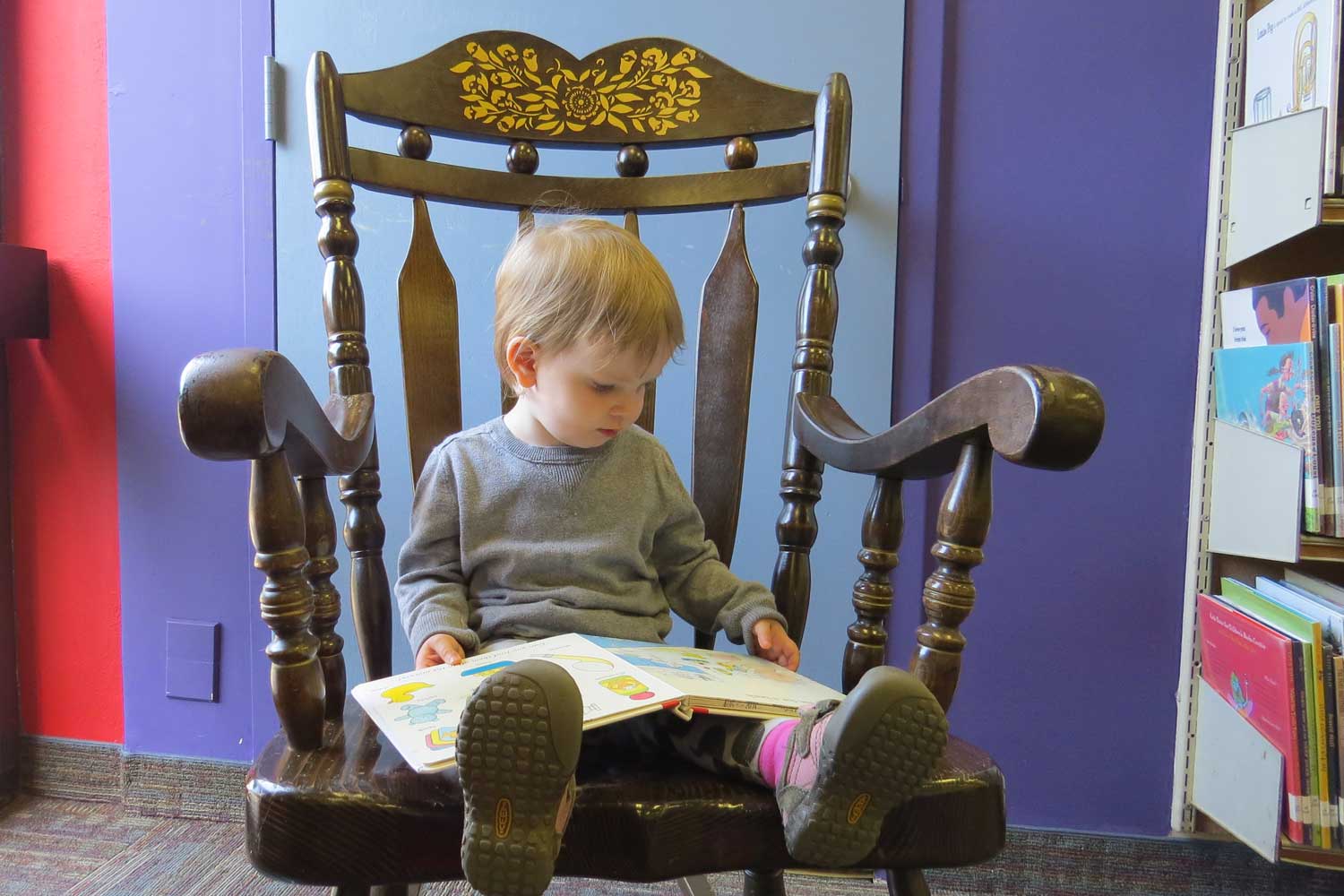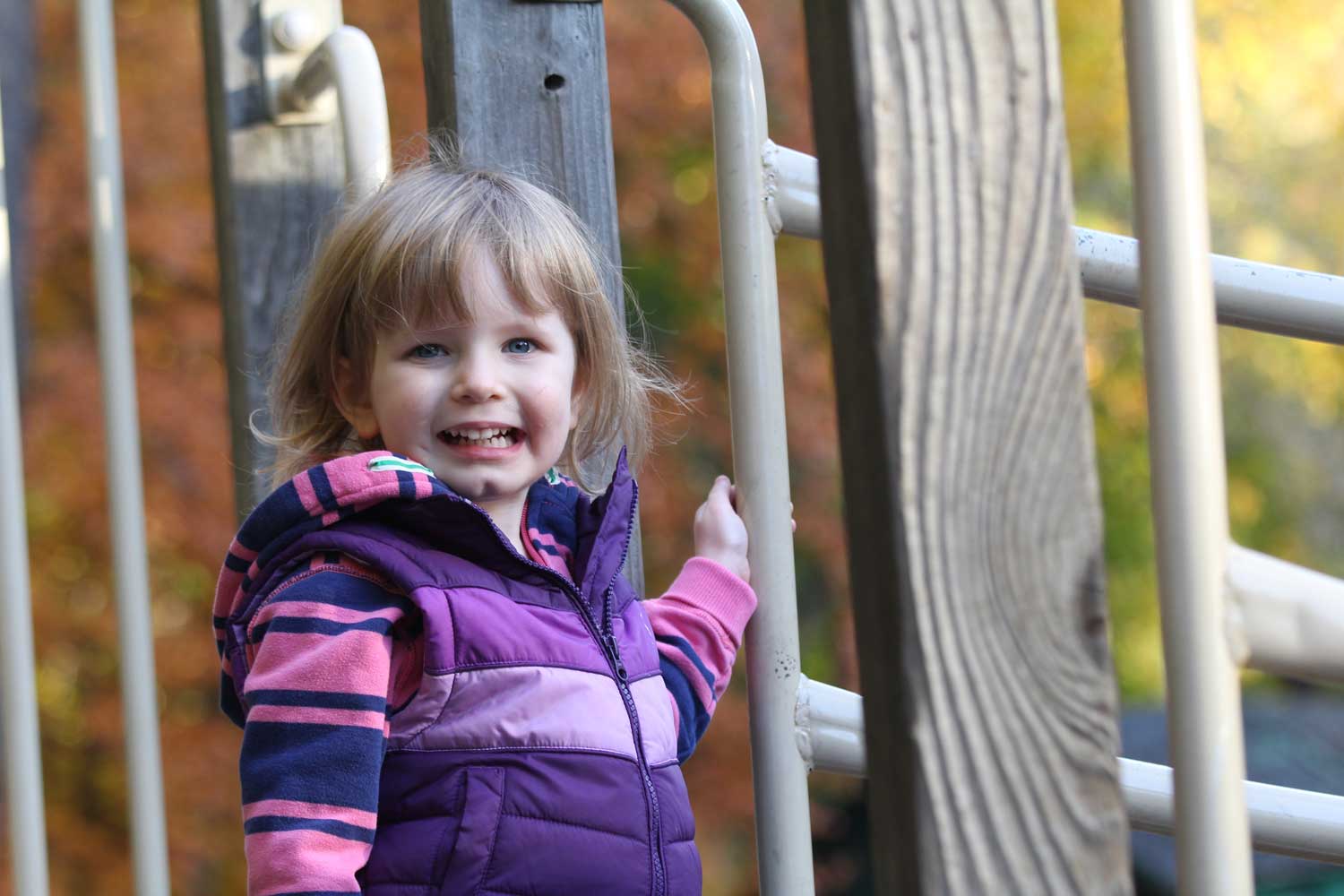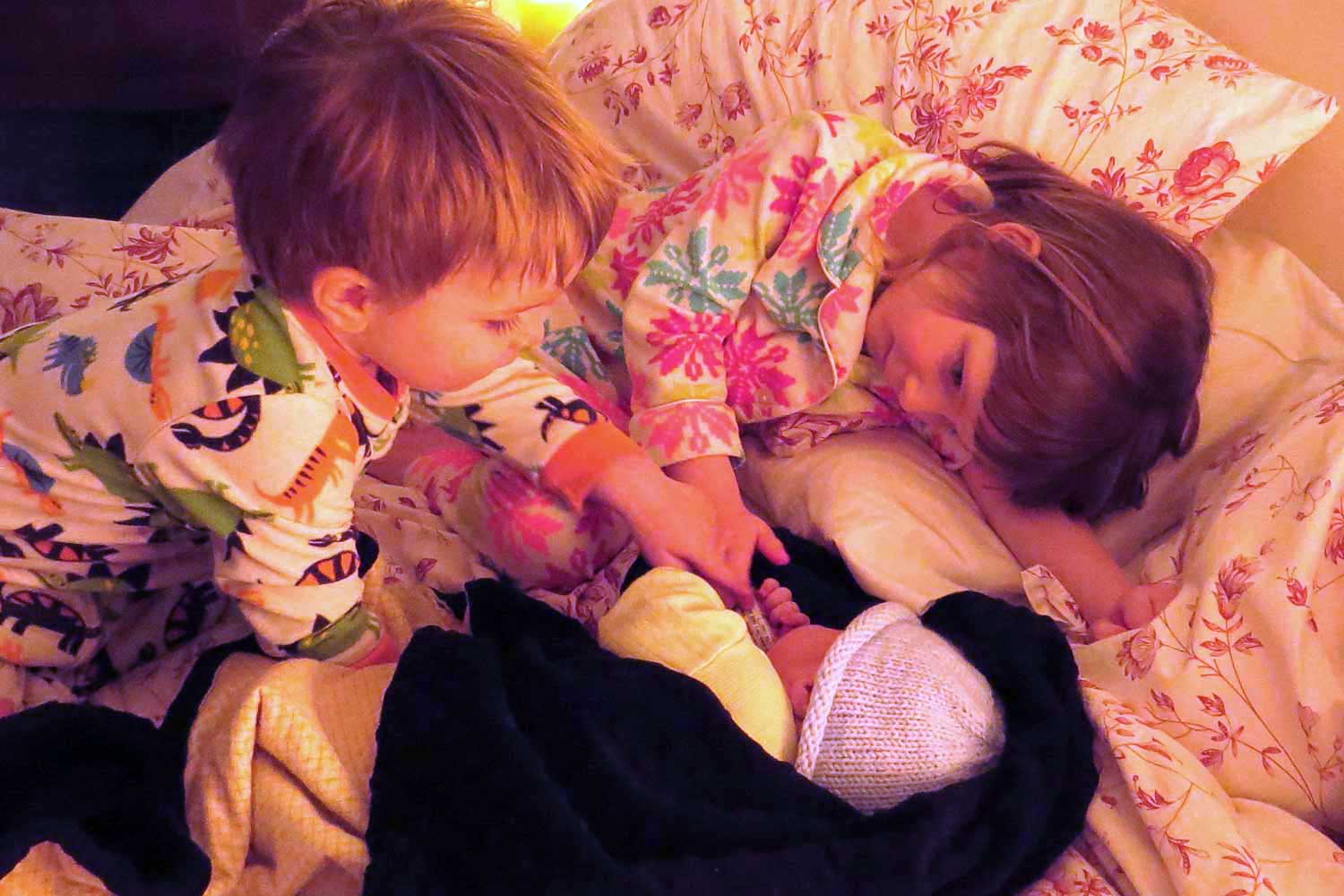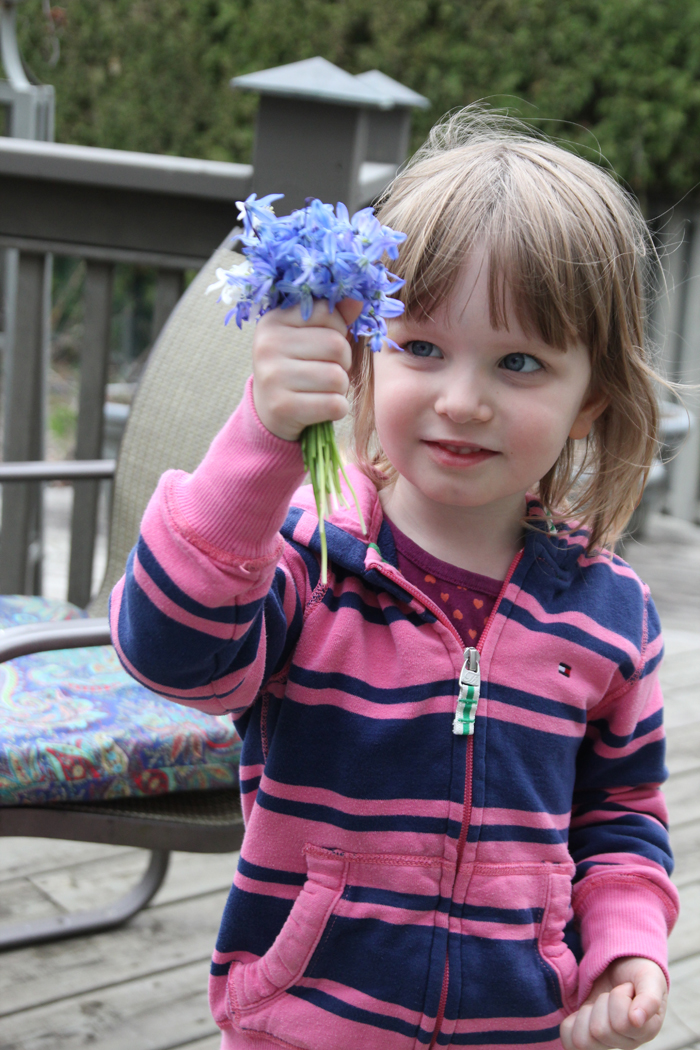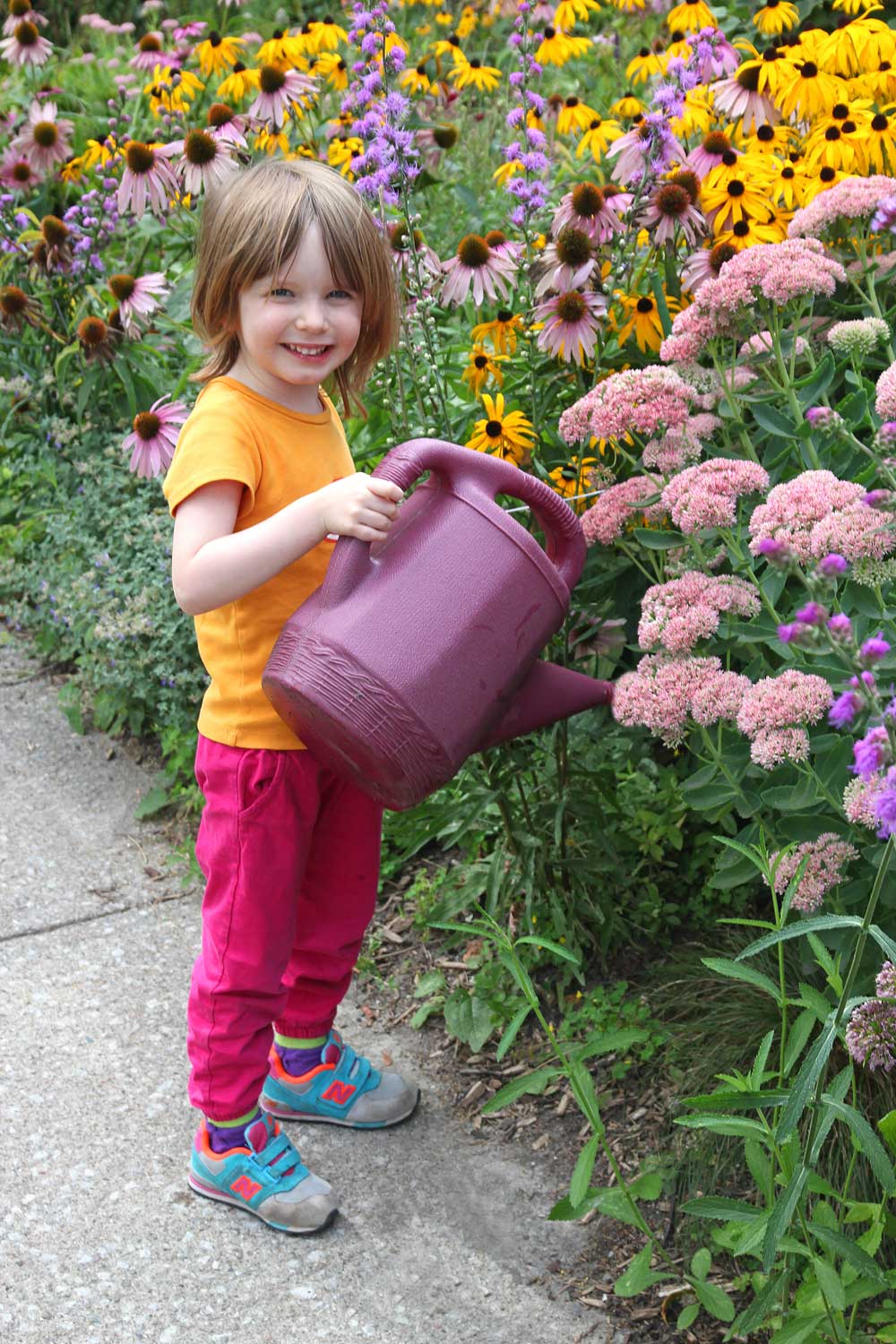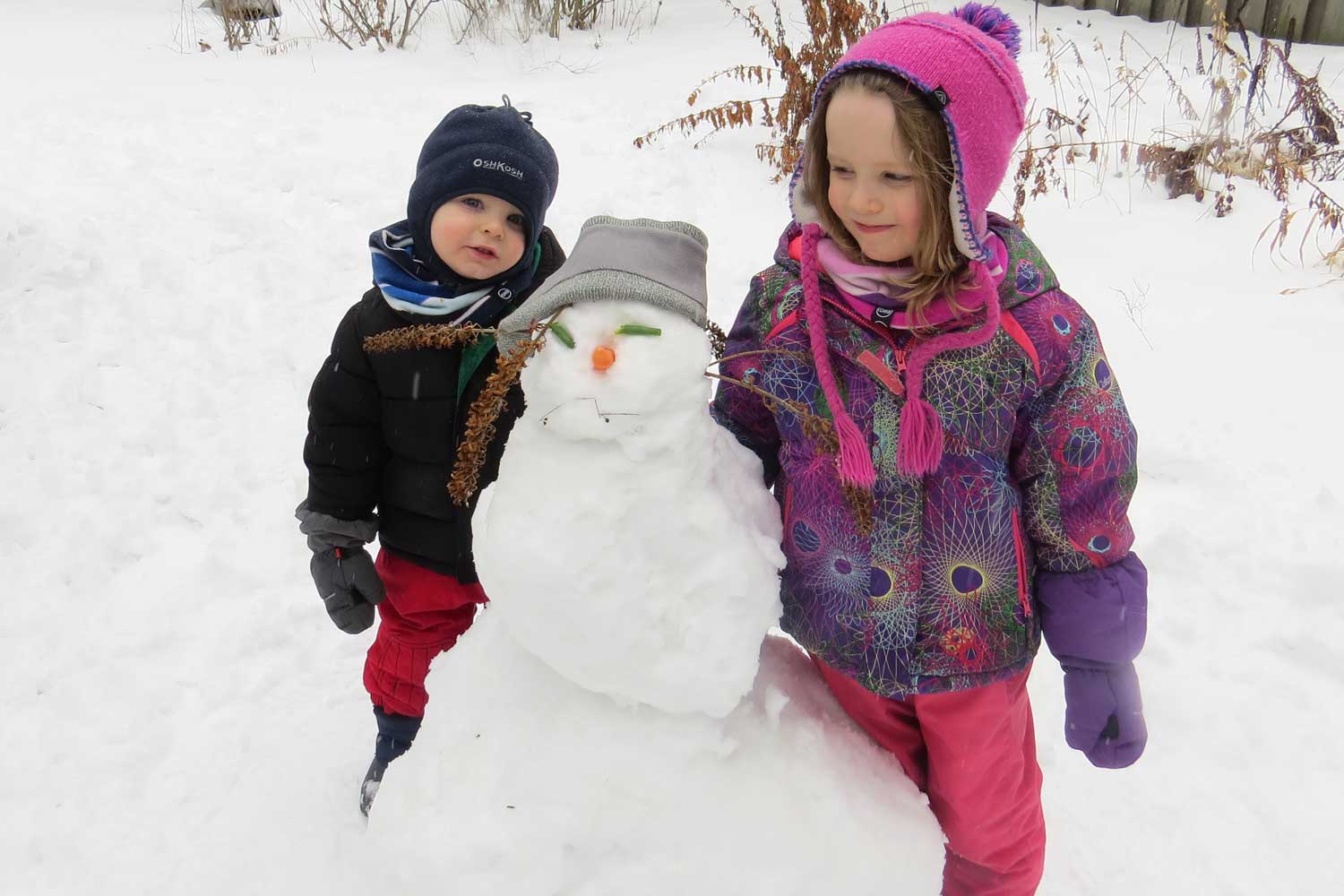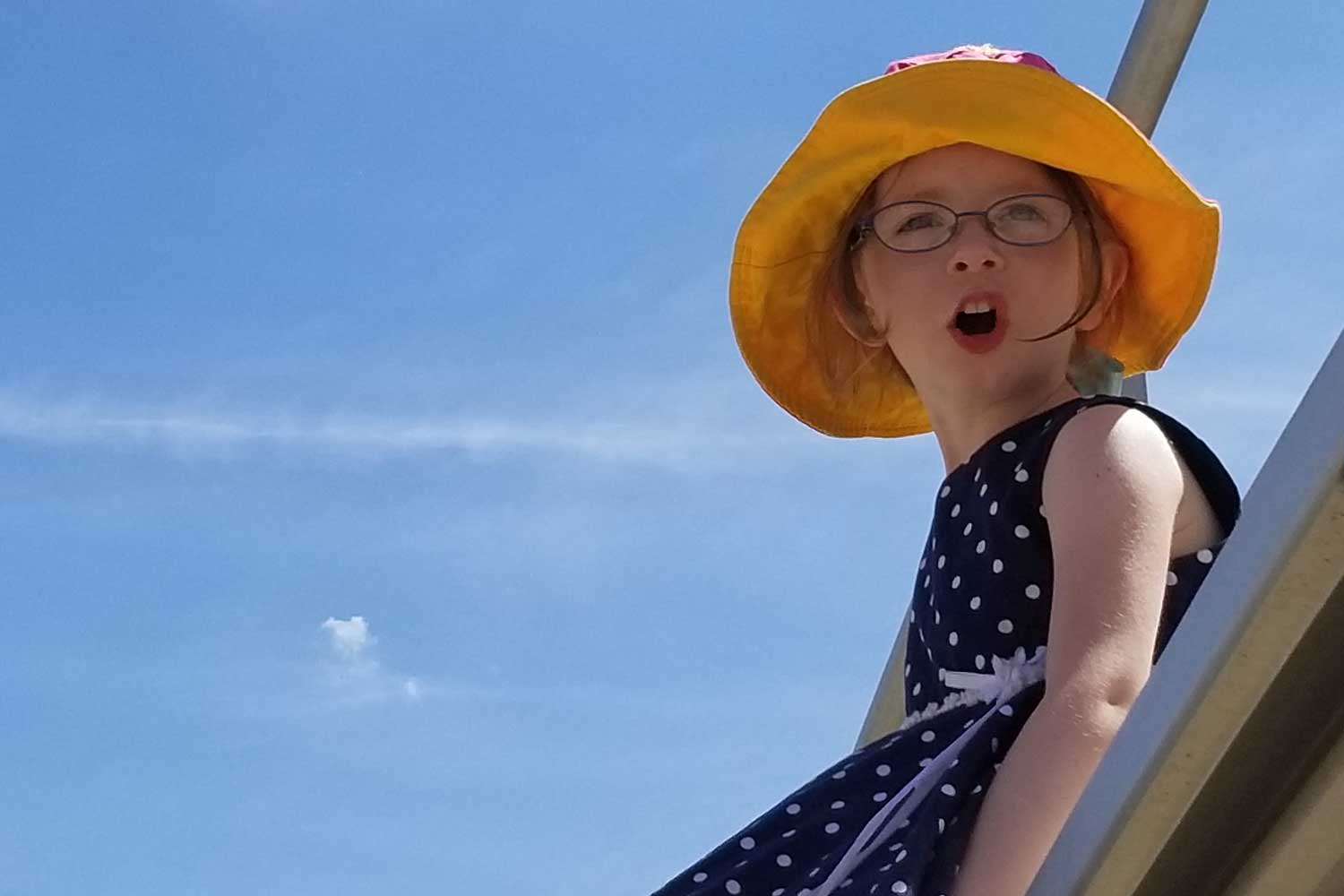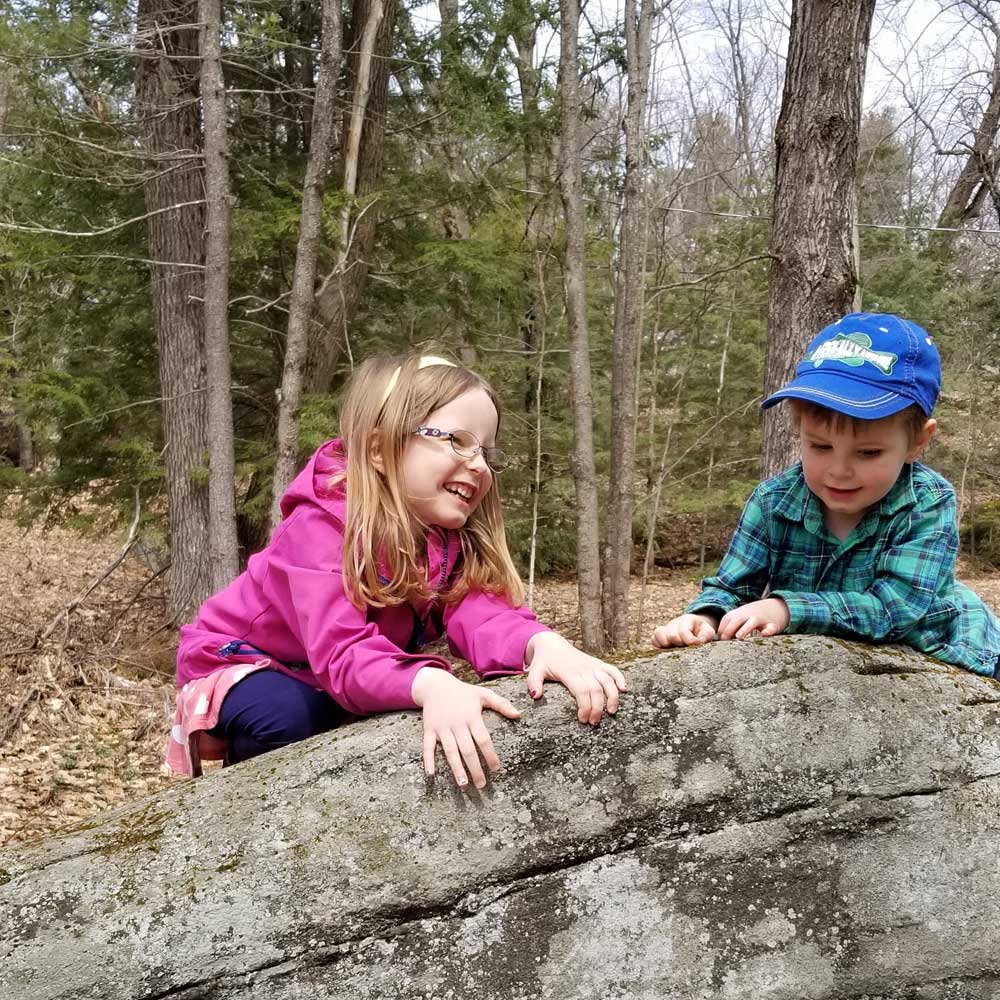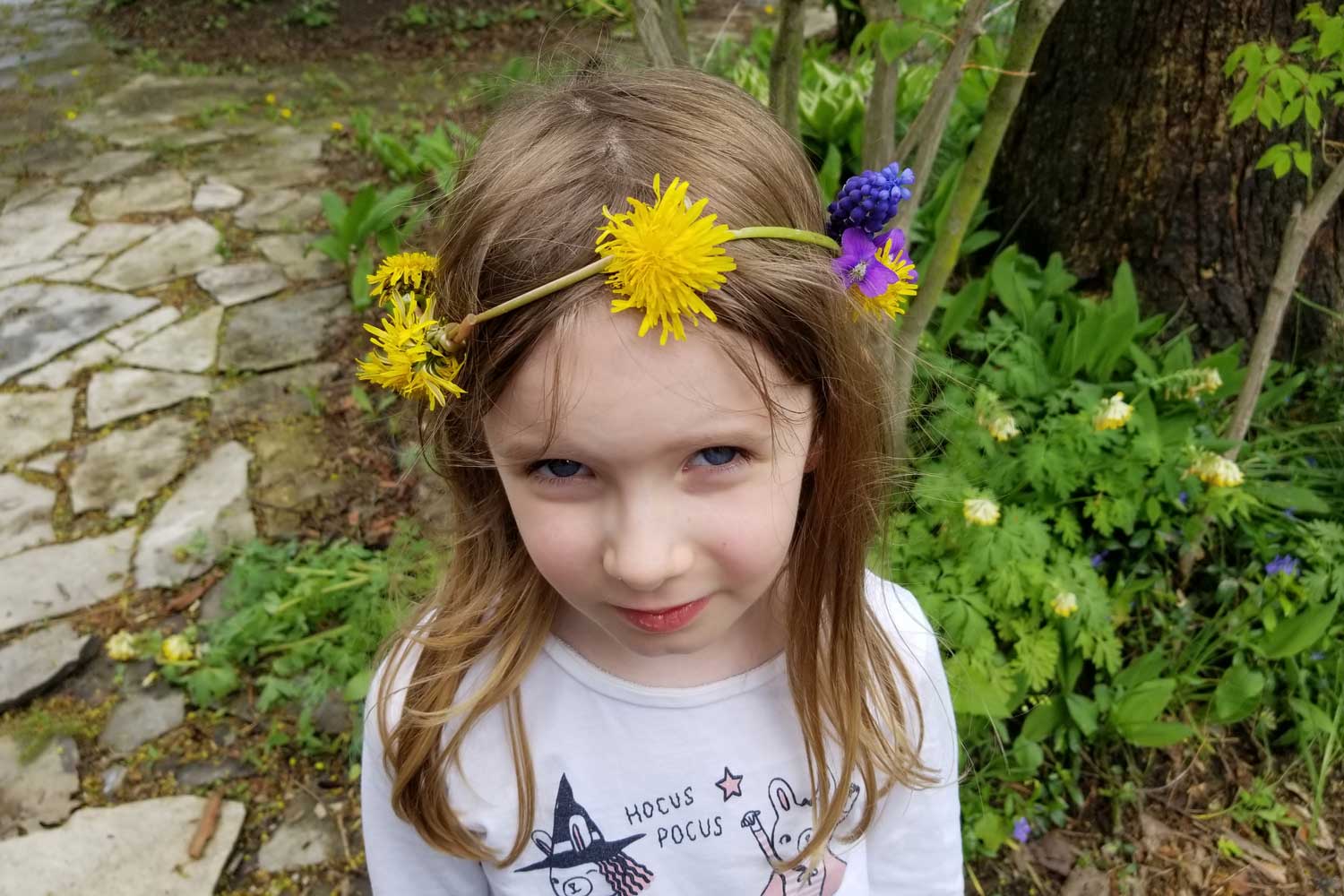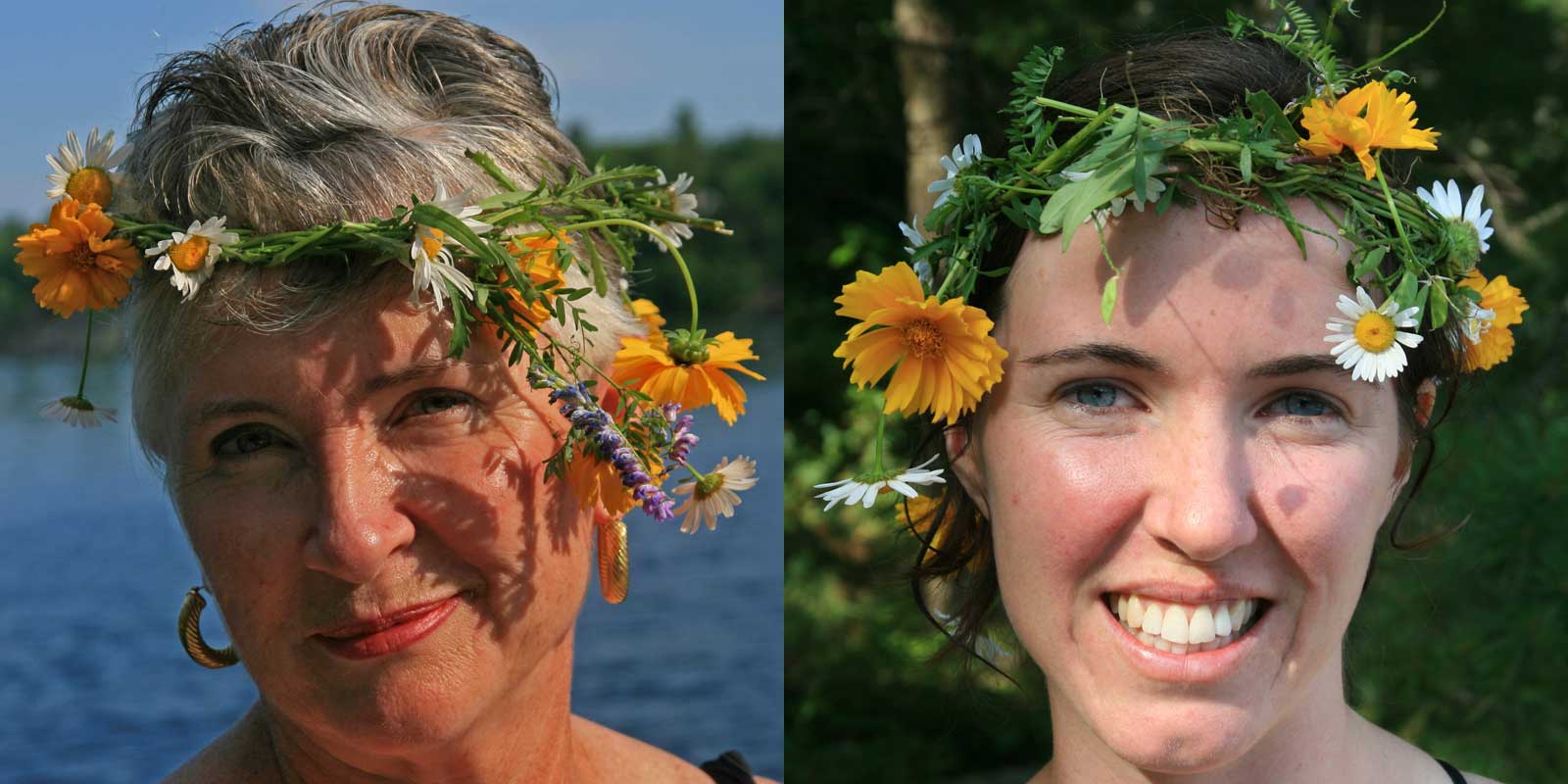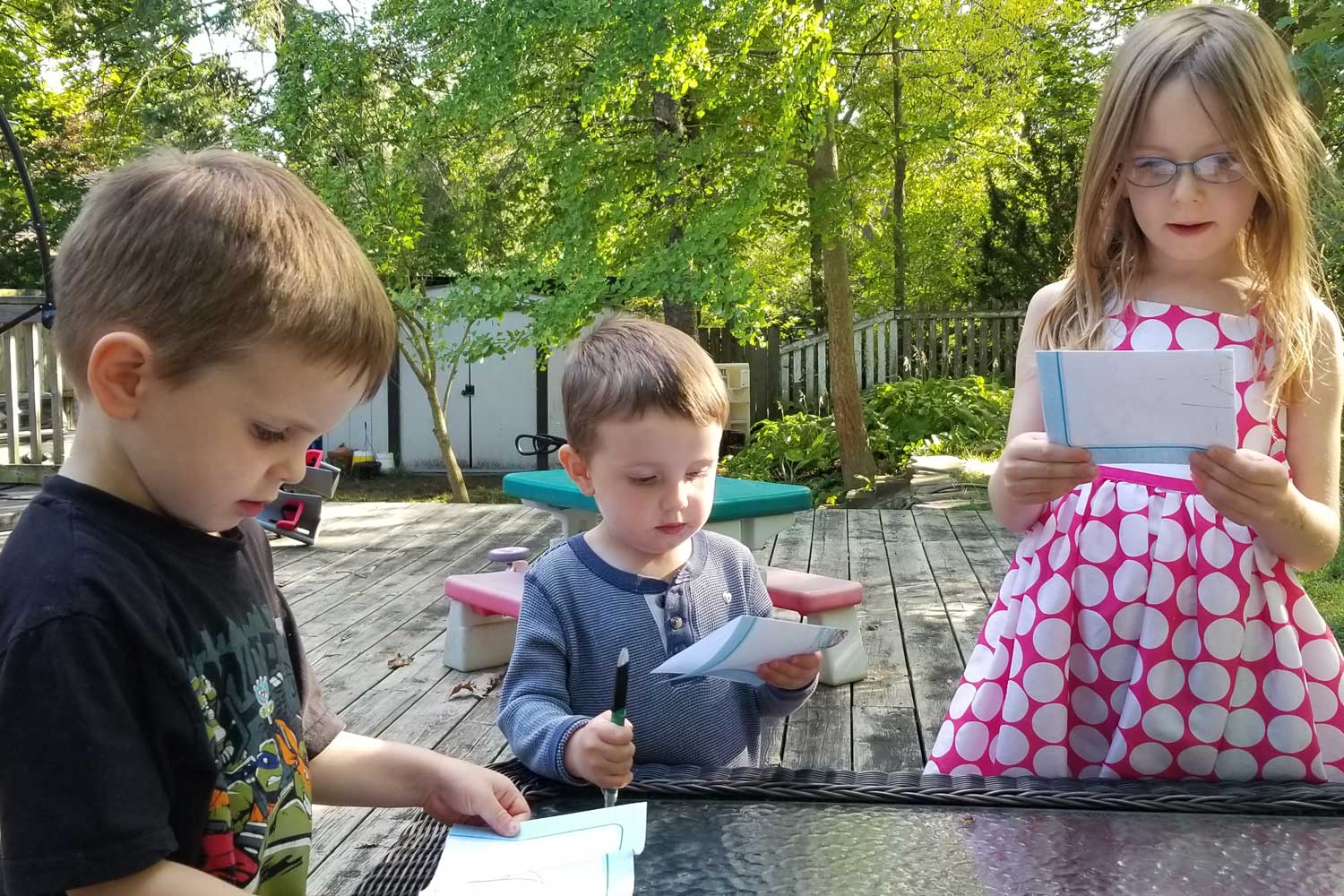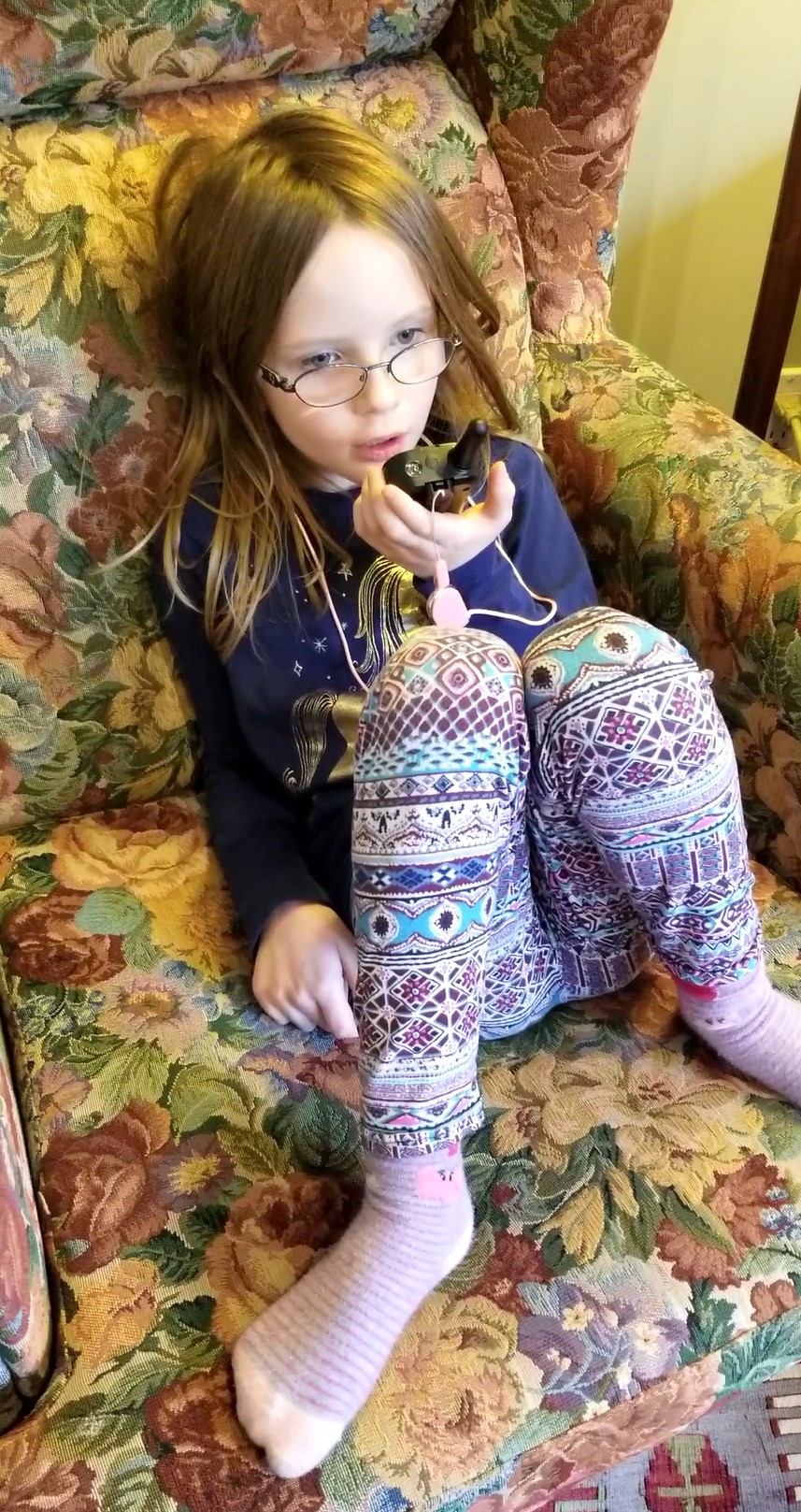I have a particular fondness for the award-winning book Miss Rumphius by Barbara Cooney (Viking, 1982). First, it celebrates grandparents. Second, it’s a story about enchanting lupines. Third, it honours the essential gardening impulse to “make the world more beautiful”. If you’d like a little 4-minute bedtime story, have a listen to me reading it to my granddaughter Emma.
Who doesn’t love lupines? Or lupins, if you like. I’ve always added the “e” to mine, given that’s how the North American clan are usually spelled. The British tend to refer to them as lupins. In fact, most of the colourful garden lupines are the offspring of those developed from 1911-1942 by the British horticulturist George Russell (1857-1951). . He planted many lupine species together in his two allotments, including the blue-purple North American species Lupinus polyphyllus – which had been brought back to Britain from the Pacific Northwest by explorer David Douglas in the 1820s – along with yellow bush lupine (L. arboreus), sulphur lupine (L. sulphureus) and others. As for the crosses, he always claimed he let the bees do the breeding work for him, but he selected the best colour combinations, gave them names and saved the seed to sell. There’s a good story on George Russell and his lupine breeding here. In Toronto, I get my June fix of multi-colored Russell Hybrids at the spectacular four-square potager garden behind the Spadina House Museum where they grow with lots of old-fashioned flowers.
In June in Toronto, Spadina’s garden is my favourite place to photograph.
The gardeners there keep the lupines coming back every year, with colours ranging from the deepest purple…..
….. to bubblegum-pink, with many bicolors that feature white, yellow and crimson markings.
They’re arrayed around Spadina’s gardens and bloom near the grape vines with sweet rocket (Hesperis matronalis)….
…. and the beautiful bearded irises….
…. and blowsy peonies…..
…. and old-fashioned ragged robin (Lychnis flos-cuculi)…..
…. and yellow loosestrife (Lysimachia punctata).
As the lupine season is winding down, the catmints (Nepeta sp.) make pretty partners.
Bumble bees have the long, strong proboscises necessary to probe through the lower keel to get at the pollen. I’ve done a lot of my bumble bee photography at Spadina House.
The Russell Hybrids have given rise to many of the modern lupines, like the Gallery Series in red….
….. and white.
I’ve been photographing lupines for a long time. The photo workshop I took with Freeman Patterson at his New Brunswick Nature Conservancy property Shamper’s Bluff back in the 90s featured….
…. lots of lupines in his beautiful meadows. Someone caught me intent on capturing dewdrops.
At Vancouver’s Van Dusen Botanical Garden, native bigleaf lupine (Lupinus polyphyllus subsp. polyphyllus) is planted under silk tassel bush (Garrya elliptica ‘James Roof’).
Lupinus polyphyllus subsp. polyphyllus is the locally indigenous sub-species of bigleaf lupine.
When I was travelling in Sisimiut, Greenland, I came upon this lovely stand of Nootka lupine, Lupinus nootkatensis.
One floriferous California spring (2004), I found this stunning hillside of dwarf lupine (Lupinus nanus) in the Los Padres National Forest.
Ten years later, I photographed arroyo lupine (Lupinus succulentus) in a magnificent meadow at the Santa Barbara Botanical Garden, along with yellow tidytips (Layia platyglossa) and goldfields (Lasthenia californica).
I came across an amazing meadow containing lupines and hawkweed in Vermont one June, and used it as the dreamy background to some abstract images…..
….. featuring close-ups of lupines. They hang in my kitchen at home.
But back to my own little patch of ground: my meadow at Lake Muskoka. I have to say it wasn’t easy to establish lupines, but after figuring out what they needed to germinate, and where they wanted to grow their first set of leaves, and how to care for them that first season, I enjoyed their beautiful spires each June.
They loved my acidic soil – they do much better in a low pH soil, despite what some cultivation guides say – and…….
…… the overwintering bumble bee queens always found the pollen to furnish their nests.
They emerged with an early cast of characters including blue false indigo (Baptisia australis) and ubiquitous oxeye daisy (Leucanthemum vulgare), below.
You can see some of wild lupine’s meadow companions in this bouquet I made featuring oxeye daisy, blue false indigo, large-flowered penstemon (P. grandiflorus), blue flag iris (Iris versicolor) and buttercups.
Many years, my lupines sported impressive coats of aphids. If I had the energy I’d try to spray the stems with soapy water, but there were lots of stems…..
And in time, I had my own supply of lupine seeds. But the white and red pines I planted in the meadows have now grown so tall that they shade out the wildflowers and grasses. That was the general idea: to have “in-between meadows” as our hillside healed itself after our construction there. I do miss them in their abundance, but enjoy the few that flower still.
There’s another reason I love Miss Rumphius. It was the subject of the very last weekly gardening column I wrote in 2006 for a certain national newspaper before they cancelled my column “to focus more on real estate”. In truth, they were bleeding money and I was just one more freelance budget item to cut. (At least I hope that was the case!)
In any event, the column I wrote detailed how I managed to germinate and grow seed of Lupinus perennis at my cottage, seen in the photos above, and I offer it here in case you want to make the world more beautiful.
ADVENTURES OF A LUPINE LADY (May 2006)
There’s a much-loved children’s book called Miss Rumphius (Puffin,1985). Written and illustrated by the late Barbara Cooney and first published by Viking in 1982, it won the American Book Award for its renowned Maine author.
Miss Rumphius tells the story of a little girl named Alice who sits on her grandfather’s knee and tells him she wants to be just like him: to travel to far-away places and live in a house by the sea. Her grandfather says that isn’t enough: “You must do something to make the world more beautiful”.
Alice grows up to become Miss Rumphius, the librarian. She travels far and wide, climbs mountains, rides camels and buys a little house by the sea. But she’s worried because she hasn’t yet made the world a more beautiful place. Then one spring she spots “a large patch of blue and purple and rose-colored lupines” in flower on a hillside near her home where they’ve spread from plants in her own garden. Miss Rumphius becomes the Lupine Lady, spreading lupine seeds wherever she goes and, yes, making the world more beautiful.
Like Miss Rumphius, I adore lupines with their bewitching blue and purple flower spires in late spring. At my cottage, I’m working on creating my own wild lupine meadow too. But at the rate my plants are growing, I’ll be an old woman with a cane by the time I’m ready to beautify the rest of the world. For lupines have very particular needs, both in their germination and ongoing growth.
Growing Wild Lupines
Perennial wild lupine (Lupinus perennis) or sundial lupine is native to eastern Canada and the eastern U.S. where large lupine meadows are a familiar sight in late spring-early summer in the Maritimes and New England. One of more than 300 lupine species worldwide, it’s the only known host food plant for the endangered Karner Blue butterfly. Preferring full sun and well-drained, sandy soil with a low pH (acidic), wild lupine grows naturally in sand prairies, open oak woodlands and grassy areas with granite-based soils. It will not tolerate clay soil, making it a challenge to grow in most gardens.
Nursery-grown lupines often fail because their long tap roots make potted plants notoriously difficult to transplant, so it’s preferable to grow your plants from seed. If I do the math on my own seed-to-plant success, I estimate it’s about a 10:1 ratio, so a large supply of seeds is needed . Note: L. perennis is a widespread species and available from a large number of seed companies, including Wildflower Farm and Prairie Moon Nursery. (Postscript: But do make sure it’s the right species – my seed turned out to be the west coast species L. polyphyllus or a hybrid of L. perennis and L. polyphyllus. Lovely but not the same thing.)
This spring, I sowed a handful of lupine seeds at my lakeside cottage, observing a ritual I’ve perfected over the past five years. First, I soak the large seeds overnight in water to soften them. Then I get down on my hands and knees and carefully press each seed just under the soil surface in what I call my “lupine mud”. It’s actually a patch of rich, damp, sandy soil behind the house that never dries out because it’s in part shade at the bottom of a hill, thus retaining the moisture that wild lupine seeds need to germinate. I’ve tried at various times of the year to germinate lupine seeds in situ, but their critical need for moisture immediately after germination has led me to separate my seed bed from the actual growing locations.
A month or so later, when the little plants have several leaves and a small root system, I’ll carefully scoop them up with a large spoon and transplant them into my dry, sunny hillside meadows where I water them regularly the first summer as they put down their tap roots. Those that survive the first winter seem indestructible and completely drought-tolerant thereafter. They may not bloom for two, three or four years, but they’re on their way, ever so slowly, to becoming a meadow.
We can’t all be like Miss Rumphius, travelling to far-off places and living in a house by the sea. But we can, in our own small way, make the world a more beautiful place.
********
It’s impossible to find a song about lupines, and not easy to find a song about gardens and children either, I discovered, but I did remember this one written by Dave Mallett in 1975. Personally, I would not use the word “prayer” and instead substitute the word “compost” – but I suppose a lot of people would not object to being prayerful about their garden. So here it is with John Denver and some singing flowers from Sesame Street.
THE GARDEN SONG (Dave Mallett composer, 1975)
Inch by inch, row by row
Gonna make this garden grow
All it takes is a rake and a hoe
And a piece of fertile ground
And inch by inch, row by row
Someone bless these seeds I sow
Someone warm them from below
Till the rain comes tumbling down
Pulling weeds and picking stones
Man is made of dreams and bones
Feel the need to grow my own
Cause the time is close at hand
Grain for grain, sun and rain
Find my way in nature’s chain
And tune my body and my brain
To the music from the land
And inch by inch, row by row
Gonna make this garden grow
All it takes is a rake and a hoe
And a piece of fertile ground
And inch by inch, row by row
Someone bless these seeds I sow
Someone warm them from below
Till the rain comes tumbling down
And plant your rows straight and long
Temper them with prayer and song
Mother Earth will make you strong
If you give her love and care
Old crow watching hungrily
From his perch in yonder tree
In my garden I’m as free
As that feathered thief up there
And inch by inch, row by row
Gonna make this garden grow
All it takes is a rake and a hoe
And a piece of fertile ground
And inch by inch, row by row
Someone bless these seeds I sow
Someone warm them from below
Till the rain comes tumbling down
******
This is the eleventh blog in #mysongscapes series of winter 2020 that combine music I love with my photography. If you enjoyed reading, have a look at the others:
- Joni Mitchell’s ‘Night in the City’;
- Paul Simon’s ‘Kodachrome’ and my life in photography;
- Vietnam and Songs of Protest;
- Galway Bay and memories of my grandfather and Ireland;
- Simon and Garfunkel’s Parsley, Sage, Rosemary and Thyme;
- The John Denver lullaby I sang to my first grandchild, Today While the Blossoms Still Cling to the Vine.
- Gordon Lightfoot for a Snow Day
- Madame George by Van Morrison – my favourite song in the world
- Brown Eyed Girl(s) – Van Morrison’s classic and my black-eyed susans
- Raindrops – on flowers and in my gardens
Please feel free to leave a comment below. I love to read them.

